Protagonists Of The Game – Between Absolutism and Relativism
In this article we are trying to summarize a discussion about Positionism and Relationism in a somewhat different way. This discourse has evolved in various ways and shapes, often without a clear overview of the status quo of itself. By doing so, it did reach it’s intended goal already: Discuss football differently (again). Now we will try to give perspective and an update on the discussion by updating some premises of itself but also giving an outlook into practice and practitioners. Welcome to Spielverlagerung Discussion.
Jamie, who brought us into this mess, and István, who is living in it, gathered together with a narrator and some short guest commentaries to talk about this mess. Come for the discourse, stay for the insights, leave because of the dad jokes.
CHAPTER 1: A Need For Reflection
Narrator: These days, a lot of discussions in football have started to move in a very interesting direction. A circular one, so to say. Some things are resurfacing from the beginning of “tactical” blogging: You have a lot of general articles coming up on concepts that are fairly known within the football world. It feels like there is a baseline for people coming up into social media which are looking at exactly this type of writing and discussions, because it is the entrance level – which the football business itself has moved away from which you can not only see on top level, but also on the level just below and (even) in coaching courses. Within the people who went through that process already, there are now much more nuanced and detailed discussions. Still, a lot of theory created in all these years should be reflected upon the new discoveries and some premises, perhaps, should be updated again. Whenever these premises are discussed, we are leaving the practical application too early and quickly in the wrong direction. Obviously, whatever is happening should always relate to actual coaching and, even more importantly, playing. However, some premises have become paradigms and these have become dogmas. Also, while we always talked about viewing football holistically, sometimes we lost that way. And in the same way, we can not separate this from theory itself either. What are your opinions on this?
István: Previously, if you would have told me that I will speak in an article involving feelings and not simply tactics, also in a more personal style, I’d have laughed at you. Maybe as I experience more in the profession and as I became „older” I evolve in some aspects about the way I see the game now. Before, I was simply and mostly focused about tactics, to understand the different mechanics, dynamics going through the matches – I still am, but now I feel I have (or at least I try to have) a deeper view on the context around the tactical aspects.
N: What do you mean? Which context?
István: About the cultures, about the people, the personality of the players and the staff, the leadership style of a coach, and things like this. Different aspects, but they have influence on the tactics -and its results-, which maybe I understood before as a more separate entity, but now I start to understand how these aspects affect the successful implementation of a tactical approach. Here, the key is not only to be successful, as there are different strategies leading to the ultimate goal – which is to win matches-, but also about finding the style and environment in which these people perform in the best possible way, something which fits them, which creates a specific bond we can say.
N: Could you give us an example?
István: Last year I started my UEFA B license and on the way I had really good conversations during the car journey with my colleague I did the license with. We were just after Argentina winning the World Cup and it raised some questions. How can a team who is playing in a really different way to our “European” eye, in a way which we don’t really understand, win the World Cup? They don’t really play in a structured way, their attacks are always different, there is no coherence, no consistent European system in the way they play. Going further: how did a team like France win the World Cup before? They were also not the mostly structured team, still. But then we went even further: how is a team like Real Madrid winning the Champions League 5 times lately, still not being too structured? These results really challenged the way I see the game – after 1 or 2 result(s) we could say, oh, it’s because they have enormous individual quality and can compensate for the lack of structure. But the anecdotes seemed to amount to evidence.
N: Did you find a way to make sense of this? What did you reflect upon and how did it creep into your daily work?
István: Obviously, my thinking is always oriented to find the logic and the patterns of a specific team, to which a structure, and the organized principles they apply was key – it’s always easier to rationalise a team’s gameplan if the patterns and structure is more clean. If I didn’t find this I always said: they don’t have the same attack twice, everyone is roaming around, what the hell does the coach even do, and stuff like this. I would say it was natural, I got used to a more structured way of playing, I’ve read/learnt most of the stuff based on this (either on Twitter, coach education or even in the profession itself), the football vocabulary is mostly able to describe this way of playing (which I will say something a bit later on), still I wanted to find the answers to these raising questions/concerns. This was the time when relationism basically faced me through Twitter, and I started to get myself into it, mostly through Jamie Hamilton’s and József Bozsik’s articles. There were too many “coincidences” to say that it’s not a coincidence, so what I basically did (or had to do) is to try to challenge my thinking schemes – similar to heuristics-, which everyone has or uses, either in life or in their respective profession. Both in University and in my working environment I’ve learnt a lot about the importance of being openminded, to be able to get new impulses in, trying to understand those, then deciding if it’s something that can be implemented or not.
N: For me personally two different trends have emerged. One, which is the most frequent one, ist he discussion about detail in the ever-evolving and improving premises that have creeped into the brains and opinions of coaches and players. They did so successfully because these ideas themselves proved successful or, at least, interesting. One example is the so-often-called and too-often-wrongly-summarized “Pep”-Style or positional play. It has proven successful and a lot of people look for a copy-paste-method of it. Would you say that influenced your reflections?
István: Ideas, formations, principles always come up again in a circulative way, as a natural and constant cycle in different forms. Today’s football is surely heavily affected by Guardiola’s success from the 2010s based on the positional play – what we see is that a lot of teams are (trying) using these principles, creating a quite uniformed way of playing around the world. This has been criticized by Juanma Lillo during the 2022 World Cup, saying basically that we have killed the unique styles by the spreading of the positional play and its training methodology – ’El Dostoquismo’/2 touch football. If we are here – I personally was never a fan of using touch restrictions, as I always found it more reasonable that if you want to control the number of touches you should do it by manipulating the space and therefore the defensive pressure. So why force players into using 1 or touches if it’s not necessary? These methodology trends naturally influenced the way of what kind of footballers we created. I’m not saying that it’s only because of this, but the natural dribblers are becoming less and less.
N: Would you say that heavily oriented focus on improving within one idea is killing styles, as Lillo put it? Did you observe it in your daily work?
István: About killing the styles – I remember I was watching a friendly game in July between Leicester and Liverpool, in which both teams were creating a 3-2-5 structure in possession, basically doing the same, starting from different formations, but ending up to become the same. For me it was the point where I had the personal feeling that something is wrong. There is a lack of identity and style in today’s football. What does most of the teams do – creating a 2-3-5 / 3-2-5 in possession, attacking the CB-FB space with runs from depth, looking for the 2nd post in crosses. Obviously, there are differences between the teams, but as a whole, we see this. Important to note – these solutions to attack the CB-FB space & the 2nd post come from the natural process that in each period there are specific, we could say in general more universal weaknesses of the present defensive trends/organizations. The question and difference lies in the process of how a team arrives at the point to exploit these.
N: Sometimes this process can work if you understand the process behind the creation of that style. Sometimes it works because of circumstances and coincidence. Sometimes it does not work because it either can not be applied or not be executed. Still, no matter if it works or not, it does become more and more similar. I do agree with that. Is that bad for the game though?
István: Ever since I feel less entertained/excited when I watch schematic teams like this. I would say, there is still some fresh air, as some teams try to give more flexibility in their structures, becoming a bit more unique in the palette of positional play (e.g. Tottenham’s usage of their FBs, Inter’s highly flexible movements with attacking CBs). In one of the articles I’ve read a really good quote: „People are not excited by what is frequent.” I totally feel this now. Of course, I still watch a lot of these teams, as apart from their style there are still a lot of solutions that I could learn from or study in depth (also, despite being more functional, we still use several positional play principles and solutions in our game in a flexible way). This is a personal feeling, my opinion about the current game and the direction where it’s headed to.
From that point I was looking elsewhere to find unique solutions, a different game. It might come from my culture, my nationality, as I’m Hungarian. Once we were at the top, the Golden Team is probably the best team ever to not win anything. Our football was unique, it was closer to functionality. I’ve read a lot about this, in Hungarian books but from a different perspective, a different wording, in which I didn’t have the understanding of what it really was and why it was unique or different. Watching the games back before I couldn’t really abstract from today’s football, therefore I couldn’t understand well enough what was happening on the pitch. As I dug deeper into functionality, I started to understand more and more, finding for example the tendency of that team always going to play the ’kényszerítő’ (tabela / one-two). Or the fact that our winger -Czibor- sometimes moved from the left side to the right to overload by surprise, which was even more unique in that time’s rigid football. Why is it important? I think we can only live in the present well, if we understand the past of who we were, giving us the cultural context. As a nation, we don’t like to be systemized, we often go around the system to find unique solutions – why would we do differently on the pitch? It’s not a coincidence that in the history of the game Hungarian and Brazilian football are connected to each other – as nations, we have a similar soul, and also there is the football connection as well (Dori Kürschner, Béla Guttmann).
N: I mentioned before that I think there are two trends. One trend is that we try to dig deeper and deeper within one paradigm. However, there is a second trend which is less occurring. It is a discussion not within a certain premise – and besides the Guardiola Style ™ you can also mention the Red Bull School out of possession for that -, it is the discussion about the premises of a certain way of playing in itself. People like to dismiss these discussions as too theoretical or even badly intentioned.
István: As I wrote, it’s a personal feeling, for me it’s not about something being better or more effective, it’s about what you enjoy watching and doing. I believe: due to this cultural context, and the fact that positional play is more optimal for long term results, the functional play will always remain less popular and used.
Jamie: Istvan begins our discourse by explaining that his perspective has changed, his thoughts are now ‘involving emotions as well as tactics’. I believe this shift of viewpoint is fundamental to the understanding of how Relationist football differs from the Positional. By allowing ‘emotions’ to inform our ideas about football tactics we are abandoning the pervasive, hyper-modernist idea that ‘football tactics’ should be seen as an abstract, objective domain. This primacy of feelings, intuitions and passions brings the subjectivity of the analyst/coach/player to the forefront of the discussion. We are now engaging with ‘tactics’ in an aesthetic manner – in the way one might engage with music, cinema or painting. We are interpreting the actions on the pitch in relation to the cultural and environmental milieus from which those actions arise. Football (and its tactics) do not take place in a vacuum, football is played by humans and humans are messy, irrational beings whose worldviews emerge in constant relation with the chaotic currents and flows of the external, non-human world.
N: So, what you are proposing is a more player-centred approach to it? Not just coaching, but playing in itself?
Jamie:It seems as though the goal of the modern objectivist movement has been to dampen the influence of these inconvenient aspects of humanness from the theories and models of football tactics. In this theoretical framing, humanness is referred to primarily by way of its physiological aspects – players are viewed as athletic entities with certain physical capacities and capabilities. They are collections of resources which the tactical plan seeks to extract and exploit. These attributes can be monitored, tested for and measured in a quantitative manner allowing training plans to be tailored accordingly. Of course, physical well-being is of the utmost importance, but these athletic capacities of players fall far short of capturing a holistic picture of ‘what it is to behuman’. The Football Tactics industry has traditionally shied away from seriously dealing with the murkier and more mysterious phenomena of human experience, consciousness and the deeper workings of the psyche. Rather, it has preferred to outsource this responsibility to ‘nontactical’ sports psychologists who work with the players to optimize game-related aspects like focus, confidence, motivation and well-being.
N: Whenever I personally faced these discussions, I liked to ask if a player is more tired after three losses or three wins, physical output staying the same. Everyone gives you the answer they don’t like to give you if you don’t phrase it that way. If it applies for physical fatigue, why not for the very idea of playing football?
Jamie: That’s my criticism. Contemporary tactical game-theory works to rationally derive ‘objective’ strategies and models from the rules of football as if it were a purely abstract endeavour. These models are then imposed onto the human football team environment where they begin to interact with the ‘technical’, ‘physiological’ and ‘psycho-social’ aspects of the players. The human relations and interactions are understood as dynamics occurring inside the larger tactical enframing; complexity within a predefined tactical identity. The most prominent, successful and pervasive school of objectivist tactical theory is known as Positional Play which is built on the primacy of a logic which Pep Guardiola appropriately referred to as ‘the rational occupation of space’. Amazingly, many coaches will insist that the imposition of a model derived from an abstract rationality can constitute a ‘player centred’ approach.
N: People would say that the coaching is player centred and the idea of the game is done through analyzing the game objectively.
Jamie: How can an approach be ‘player centred’ if its principles are derived from an apparently objective ‘rationality’? Humans are not capable of being totally objective or rational, this is obvious, anyone who insists they are should not be taken seriously. Genuinely human-centred disciplines such as various schools of psycho-analysis seem to better understand the importance of embracing the irrationality of human experience. Practices such as dream analysis are an integral part of a psycho-analyst’s process to understand the deep, subconscious, libidinal drives and desires of the subject.
N: I would not agree with that. But also, I would not agree with that being always applicable to football either.
Jamie: I’m not suggesting that all football coaches must be trained psychologists although I think an understanding of this domain can only be of benefit and it’s probably worth noting that both, Istvan and René later on, have academic qualifications in Psychology but it’s vital to consider what a truly ‘player-centred’ tactical system might actually look like. Recently, I was told by people close to Diniz (Diniz is another trained psychologist) that he has had very little, if any knowledge of or interest in what we might call ‘contemporary tactical theory’. It’s quite incredible and hugely inspiring that someone who’s influences are from outside the coaching establishment can have such a profound impact on the way we think about and apply tactics.
If Positional Play is grounded by the logic of rationality then Relationist tactics must emerge from an alternative logic of irrationality – what we might refer to as a ‘logic of chaos’. Relationist logic proposes that tactical identities should emerge directly from the non-linear relations between the players. Relationist tactics are formed as a result of interplay between multiplicities of different ‘forms of life’ and the subjective interpretations these disparate perspectives produce; Identity emerges from difference.
N: Perhaps chaos is a step too far. It’s chaos for the other paradigm. That’s for sure though. But I get your point: it’s not the chaos of randomness, but the chaos of life, nature, people.
Jamie: Rather than the game-theory informing the players it is the players who are informing the game-theory – this is a fundamental inversion. Players grow up with their attentions attuned to specific cultural phenomena. Narratives of the collective imaginary, which include folkloric motifs such as Argentina’s Pibe d’Oro or Brazil’s Saci Perere, mould their forms of life in dialogue with localised socio-cultural conditions. As David Winner illustrates so well in “Brilliant Oranje: The Neurotic Genius of Dutch Football’, players growing up in Holland do so in relation to a completely different system of environmental dynamics.
N: Do you think that there is a future of this past? Or did we move past it “successfully”?
Jamie: It seems we have now arrived at a point where there is a genuine possibility of reconceptualising tactics using a more Relationist orientation. Coaches like Fernando Diniz and Henrik Rydstrom have dared to deploy forms of Functional play at the highest level with both coaches winning significant trophies in 2023. Istvan’s opening remarks suggest ‘tactics’ and ‘emotions’ to be separate entities when it comes to football – but perhaps this split is a byproduct of the Positionist tactical paradigm? A separation between the felt experience of the body and the rational thinking of the mind? The Relationist movement seeks to re-connect these aspects and ground football tactics in the shape-shifting complexities of humanity’s relationship with its environment.
CHAPTER 2: What Does It (Functional/Relational) Mean For The Team?
N: I am quite sure that we at least have moved away past a separation of body and mind. The brain is inside of your head, just like your emotions are influencing your body and its function because they are something factual within it. Personally, I did interpret István – and I am sure you did too – and his, let’s say, reflected opinion exactly in that way: That they are a unity, just like Lillo proposes about defending and attacking. Why should there not be emotions in either and interactions, too? So, there will be different situations in a game, different situations for a player, but also different teams, cultures and players which prefer to play a specific way, and, because of that, can play better in that style. What is Functional Play or Relationism and how does it tie into these points you are making?
István: There are a lot of conversations going around about the different styles, approaches about the game, mostly speaking about the positional-functional play debate lately, if we can debate about this at all. Sometimes I feel these debates move into the direction of implying that one is better than the other, and I think here is the problem. It’s not about one being better, it’s about understanding the differences between the 2. In terms of efficiency, there will be differences, based on the culture, the people, and also in the type of the competition. Let me highlight the last one: how come Guardiola winning the leagues almost always, yet he couldn’t win the Champions League for more than 10 years?
N: Randomness? Luck? The nature of the competition?
István: Or how is it possible that between 2016-2022 the teams who won the Champions League were mostly highly flexible teams – Real Madrid, Liverpool, Bayern Munich – in terms of the structure? I’ve never been someone who analyses something based on the result, but I don’t want to be naive to think that it’s not important, as the results validate the ideas, and if something happens more, it must be studied, revisited to find the reasons. Anecdote becomes evidence through frequency. I believe the answer is hidden in the essence of the positional-functional play debate.
N: Basically, one of the two – let me guess, the functional one – is more adaptable to the nature of this more random competitions and will get above expected result with even teams while the other will more consistently get you results against and with lower teams? Or could you at least explain the argument itself and why something like that could be the case?
István: In positional play you are organized to attack through spaces, this is why the term came up – positional play or zonal attack, if you read the books of Martí Perarnau. Basically, there are specific fixed spaces that need to be occupied, on this you base the circulation of the ball, which purpose is to move the opponent mostly horizontally to create positional advantage, numerical is not usual, since the target is to symmetrically distribute the space, therefore if there is any superiorities, it’s mostly an actual dynamic (tempo) advantage coming from the position, which allows the defensive line(s) to be broken.
N: That’s not always the case, isn’t it? They don’t look all the same.
István: The basic principle is to create an organized order – as Arteta said, it’s always easier to go into the kitchen and know where your cup is, to fasten up your decision-making essentially-, but it doesn’t mean it can’t be flexible. If we are at the example, Arsenal rotates their structure quite a lot, to build from a 4-1 or 3-2, to have the FB inside, outside or high, although they are still positional, but they do it with high flexibility based on self-organization within the system (if the FB is inside the 8 will stay higher / if the FB is wider the W knows that he can move inside and the FB can move up etc.). I think this is the flexibility that a lot misunderstands in 2 ways:
- a positional system can’t be flexible
- if something is flexible it’s not positional
N: Then what’s the fuss about functional play?
István: In the functional game (or a mirror translation as we say in hungarian -› positioned to the ball game) you can create numerical superiority on the ball’s side, which is one of the basis to break the lines. As opposed to the positional play spaces are not only created by moving the opponent, but also by the movement of the players (not to misunderstand – players also move in positional play and they also create space with it, but it’s not the dominant tool to create space as opposed to the functional game). Therefore, here the movements are much more flexible, they are not fixed or associated to specific spaces, but focused to the ball and the overloaded side, creating asymmetry, where players are allowed to leave their spaces, as the key due to the proximity is about the increased player – pass connections. Often labelled as organized chaos (I would personally prefer organized disorder, due to chaos is often linked to a negative meaning), where the organized part is the overload itself, but the movement can and must vary to create obstacles for the defenders. Chaos often refers to the unexpected, combinative solutions which emerge from this organization.
N: That’s what I meant before. It’s not the chaos of randomness, but the chaos of decision making and interactions of people happening in their head before they happen outside of their head. The chaos of life.
István: In a way, this type of emerging solution usually happens less in positional play, as the core of the system is predictability, which gives stability for the system. Here the movements are more oriented to the ball, moving close to it (instead of moving away), whilst the principles are oriented to create connections (toco y me voy = pass and move / tabela = one-twos / tilting = overload / escadinhas = diagonality + asymmetry etc.). The difficulty comes from the harder wording of this play, as english is a more describing language, whilst portugal or hungarian is more expressive.
N: A friend of mine said that the reason Germans play football the way the do, is because “der Ball” is masculine. And the English don’t have that, whilst in most countries the ball is feminine. I am not sure if he is an idiot but I am sure he is not a genius though.
István: I.. Let me give you a better example: whilst in english it’s said as one-two (meaning basically simple actions as 1-2, only describing the action as a number in a mathematical order), in portugal it’s called tabela, as table, representing a virtual table the players create, whilst making an exchange of passes between each other, so the word itself expresses some form of player connections during the action. In hungarian we say ’kényszerítő’, in which ’kényszerít’ as a verb means to force/oblige/constraint, referring to the action as something in which the defender is being forced to decide if he follows the runner or the ball. In terms of player roles, the concept of position is understood in a different way, and you assign players with functions. It still has some fix points, but it’s more flexible, where the functions describe the roles and movements that you want to see from a specific player. Functions like 4th defender, false-positions as false 9 or false CB.
N: There was a former Croatian coach who basically put all his tactical input into nursery rhymes. He learnt from Brazilians the way to play and that was his way to create pictures in the heads of his players. His name was Ivan Markovic, nickname Ðalma like the former Brazil star Djalma Santos. He did not win much though, I think.
István: So going back to the results – if we look at the tendencies we could say positional play is much more optimal in order to win in League formats, whilst functional play is more optimal to win in Cup formats. The reason is simple: positional play is formed and organized in order to optimize the performance – therefore on a long run it will most likely give you better results, as you focus on doing the same, but doing it better and better as the time goes by. The system is predictable, which will positively stabilize the results. On the other hand, in functional play there is more variability in the game, which reduces the chances of giving stable performances on a long run, yet in cup formats, where you have less games and unpredictability increases it seems to be more optimal and effective.
Simple statistics – whilst Guardiola won the Leagues 11 times, Ancelotti 5 times, Guardiola won the Champions League 3 times, Ancelotti 4 times. If you watch the performances of Fluminense, you see the same tendency – they’ve won the Libertadores, but finished 7th in the Brasileirao (although last season they finished 3rd). The exception from this now is Malmo, who have won the Swedish League, although they use functional elements by mixing it with positional ones. Leverkusen is also similar, obviously there are differences between the 2: Malmo becomes functional earlier, but have some positional principles, whilst Leverkusen stays positional longer until they become more functional. Malmo moves the ball wide earlier, where they have already created the overload, Leverkusen keeps the ball inside longer, then moves the ball wide where they arrive to overload.
N: I would argue that Xavi Alonso basically created a team that plays positional, but that positioning is based on the very unique capabilities of the player and he is not afraid of being lopsided or having a different number of players on one side or in one line compared to its equivalent. But in the end, that’s just a matter of spectrum, no? And he might even win something, everything or nothing this season.
Jamie: I think it’s fine to avoid assertions of supremacy – we don’t have to declare that one is inherently ‘better’ than the other. But this doesn’t mean that we can’t be clear about our preferences and the reasons for them. This is aesthetic analysis – to be in touch with how different modes of football make us feel and attempt to unpack the causes of this effect. If I say that Ridley Scott’s 1979 Sci-Fi Horror ‘Alien’ is my favourite movie of all time it is not necessarily a question of it being objectively superior to all other movies. It is a statement of personal preference.
N: It’s also a statement of your age even more than your questionable taste. The Godfather is the best movie, obviously. Who doesn’t agree doesn’t know anything. Right?
Jamie: Even so, it is then interesting to interrogate oneself with regards to why this is the case. Is it the script, the performances of the actors, the story, the atmosphere, the cinematography, the score? Probably it will be a combination of all these aspects and more. By articulating justification for our own taste and preferences we engage in the mode of analysis used in art criticism and we shift away from the quantitative, data driven perspective which dominates modern interpretations of football. Precise measurement and accurate calculation are not required to describe how a song makes you feel or how a painting speaks to your soul. As an aside, in all of the articles I have published about Relationist football tactics, none of them have used statistics to illustrate or back-up tactical observations. In fact, I’ve barely used any numbers at all save for counting how many players gather together in close proximity situations and notating the lines of Positional formations.
N: So, we are moving away from results again? What did you ask yourself then to arrive at, frankly, this whole mess?
Jamie: The question I have asked myself is: why do I prefer Relationism? Actually, Istvan already wrote the answer – ‘people are not excited by what is frequent’. I prefer football which is surprising, unpredictable, shocking and mysterious. I want to be confused, unsettled, and deceived by what I see. I want to be forced to question my existing assumptions and compelled to change them. I don’t coach and watch football to find confirmation that I am already ‘correct’. I watch football to realise how I am wrong, and it is the players – not the coaches or analysts – who show me the depth of my ignorance.
N: Less wrong or more right, huh?
Jamie: As I proposed earlier, in Relationism ‘tactics’ are not separate from emotions, they cannot be abstracted from our subjective interpretations of the game. This applies most significantly to the players as they play. As the players interact they enter into a conversational dialogue with each other and the broader environment. Each player’s footballing vocabulary is shaped by their own unique perspective and form of life – every action is authentically tactical and is an act of selfexpression. I remember René telling me some years ago that ‘everything is communication’. I think Communication is one of the lenses through which the distinction between Positionism and Relationism can be most clearly observed. ‘Communication’ is not a monolithic entity – there are various modes of communication and each of these modes affords its own genre of organisation. At its heart, this is what the distinction between Positionism and Relationism is about – two fundamentally different ways of achieving collective organisation and team coherence. Riot Police and Rioters are both organised groups but the means by which they organise are different – the same can be said for an orchestra and a free-jazz band. Organ-isation refers to the processes by which parts come together and achieve coherence, and communication systems constrain and define the nature of these processes.
N: So, what you are saying, for the same intention, the same purpose, they just follow a different logic in not just achieving, but also defining and experiencing and thus communicating it?
Jamie: Listen, the source of Positionism’s organisational logic is an objective understanding of what rationality means with respect to the player distribution and movement on the pitch. It then becomes the role of the coach and their technical staff to teach the players the principles of this logic. If, like Pep Guardiola, the coach is highly-skilled in this mode of top-down, one-to-many information transfer then sooner or later most of the players will have internalised this received logic. Adherence to these governing principles on the pitch will then quickly become second nature or even ‘automatic’. In the books of Perarnau it’s called something like teaching them a language. This hierarchical, broadcast mode of communicating Positionist principles necessarily leads to a particular flattening out of differences among the player’s interpretations of how spaces should be occupied. The initial imposition of Positionist principles is a suppression of difference and surprise in favour of standardisation and repetition. As Mikel Arteta alludes to with his cupboard metaphor, his idea of football is ordered by repeated processes and familiarity – unpredictability and improvisation are less prominent features in his kitchen.
N: And there is basically a different logic you are proposing? Or, sorry, rather you have observed?
Jamie: In contrast, Relationism seeks to afford an environment where the system of communication (signs, signals, gestures etc) emerges from the interactions between players rather than stemming from a situation which is constrained by predefined principles of what is rational or correct. Of course, the coaches must be proactive in cultivating and facilitating such an ‘open’ environment. Principles of play (such as ‘offering close options’, ‘playing on the side’ and ‘sharing the ball’) can still be imposed, but these constraints are of a different nature and logic to the explicitly regulated distances, angles and space occupations of Positional logic.
N: I am not the brightest bulb in the bulb store. Can you summarize me what I should be understanding already?
Jamie: Positionism’s logic is tied to a predefined idea of what is correct and rational – the starting point is fixed. Actions are evaluated by assessing the degree to which they align with the identity of this fixed, objective reference point. In contrast, the logic of Relationism orients itself around an unstable source which is constantly breaking down and reordering itself. Gilles Deleuze’s description of this process is appropriate, ‘Far from being a new foundation, it swallows up all foundations, it assures a universal collapse, but as a positive and joyous event’.
N: You had me until Gilles, then you ha-deleuzed me. Come again?
Jamie: Relationism’s removal of overriding positional structure enables this logic of chaos to creep into play. The players can now interact in a free-form ‘conversational’ modality allowing the conditions for ball-progression to occur in spontaneous and organic manners. Each moment is born from the infinite complexity and variation of the last and is itself pregnant with the randomly scattered seeds of the next. There must still be an internal coherence to the communication of the team (such as shared attunement to interactions like tabelas or escadinhas), but the signs and signals of Relationism do not adhere to the pre-established order of fixed metaphors like Arteta’s cupboard.
N: The best way for me to understand and, admittedly, even to agree is the language metaphor. Except deleuzer you quoted.
Jamie:This alternative logic of communication – and the different organisational principles it gives rise to – is the source of Relationism’s inherent unpredictability. Relationism has its own language of coherence, a ‘chaos-herence’ where nothing is ever fixed or total but instead is always incomplete and false. Deception and surprise are among the most fundamental concepts when it comes to seeking a game-theoretical advantage – Messi fakes left to go right. And it is this aesthetic of suspense and shock – just like with the movie ‘Alien’ – that keeps me so enamoured with the chaotic patterns of Relationist play.
CHAPTER 3: What Does It (Functional/Relational) Mean For The Player?
N: Honestly, I try to look at this perhaps less aesthetically than either of you two. I am sorry, but I don’t care about your taste. The language metaphor is what got me hooked though. And now I will say something: We do have Zonal and Man Marking. We do have Hybrid Pressing Schemes or Mixed Marking or whatever else. This very website has very clear, very long, very detailed and very wrong explanations about variations of Zonal and Man Marking. You mentioned Positional Play and, even more importantly, Zonal Attack. Why should we not have one more distinctive style in attack if we have, even intersubjectively agreed ones, in defense? Based on that I do have a question and this question has the intention to leave the mess and bring clarity. In my opinion this question ties into Istvan’s points which he, perhaps, could illustrate with some examples: What does it mean for the individual player to play within a distinctive style? That’s more interesting to me because, frankly, I don’t care that much about the extreme ends of the spectrums in theory as they don’t exist anyways just like the insane follow-to-the-toilet-numbermarking doesn’t. What I care about are observable, tangible difference for decision makers – and these decision makers are on the pitch, not off it. Care to elaborate?
István: A bigger difference in the 2 is the organisational point itself – in positional play mostly your deeper players, CBs – 6s – FBs get most of the touches, since the attacking players are occupying advanced zones/spaces, and the circulation happens at the back mostly between the aforementioned players. Not a coincidence that in these teams (Man City, Barcelona, Arsenal etc.) we often find players with extraordinary ball playing skills in these positions, as usually they have the most passes/touches, and quality they have in terms of ball progression is key to make the system working. Although, it’s also not a coincidence that in order to have more touches for 8s/10s, often some players are allowed to flexibly move deeper or wider for this purpose – De Bruyne, Odegaard. This is another example, that positional play can be flexible, and it should be, in order to adapt to the individuals, but the level of collective adaptation is obviously smaller than in functional play. Just think about how Manchester City use De Bruyne’s main skill to put outswinger crosses into the box from depth or the way how Arsenal exploits Odegaard’s ability to dribble inside and find diagonal runners behind the last line.
N: I agree and it suits my point about Alonso’s Leverkusen with the Grimaldo-Frimpong asymmetry of qualities which results in an asymmetry of positioning which results in an asymmetry of structure. Is that the difference between positional and functional play now? That the organizations start somewhere else with a different starting point?
István: In functional play you can move this organisational point a bit higher – due to the flexibility this system allows. This is the reason why these teams are often organized around a key playmaker – Fluminense -› Ganso, Real Madrid -› Kroos.
N: Hungary -> Szoboszlai.
István: Exactly. The target is to get more touches for the advanced players, also decreasing the responsibility on the players at the back by allowing more players to drop, to ask for the ball and to go with it. The difference: whilst in positional play the attackers have less touches, but they get those in more quality situations usually (stay away), in functional play the attackers have more touches, but often in less quality situations (move close), where the purpose is to combine, create. This also means that in functional play the individual-specific organisation gets a higher importance in order to maximise the possibilities within the system. Obviously this also happens in positional play, but there the collective principles give a more rigid framework for the players. We can say, positional play is more top-down, whilst functional play is more of a bottom-up process in terms of understanding the individuals.
Jamie:When speaking about the roles and responsibilities of the individual I think we can use the concept of ‘affordances’ and how these ‘opportunities for action’ are shaped by the ‘constraints’ applied by the coach.
N: It starts on the training pitch, right? As every mistake does.
Jamie: We can use the practical example of the classic Positional Play exercise: the 4v4+3. If I am coaching this exercise using the logic of Positionism I will already have a clear understanding of the optimal possession structure before the exercise has started.
N: Let me guess. A geometry lesson. Diamond for the ball carrier, diamond for the end player, which means that you have a square in the middle, filled with a neutral and the two other neutrals being the ending point of the two connected diamonds.
Jamie: This structure is rationally derived by applying Positionist logic within the constraints of the exercise. There are 2 jokers (often GKs or CBs) who stay in position at each end of the zone. Inside the zone there is a 4v4 + 1 joker (often a 6 or a 10). This gives a 7v4 situation for the possession team with the aim of the exercise being to maintain possession while transferring the ball from end-player to end-player. Positionist logic ‘solves’ this exercise before play has even begun. By positioning one player in each corner and 1 (usually the joker) in the centre, the possession team gives a decisional crisis to the defensive 4. By arranging in this way, the possession team would be said to have achieved ‘positional superiority’. Because of the possession 5’s rational occupation of space (also with the 2 end support players), the defensive 4 cannot eliminate the ‘free man’ when the ball is circulated with enough technical proficiency and in accordance with Positionist Principles. Various ideas such as ‘finding the free man’, ‘moving the ball to move the opponent’, ‘up-back-through/3rd man’, ‘rotations’ and ‘receiving with optimal body posture’ are then developed within the context of the rational space occupation.
N: The interpretation of the emerging interactions happened before the situation, not in it.
Jamie: We can see these dynamics play out very clearly in the famous clip of Busquets (perhaps the greatest ever exponent of Positional 6 play) playing as the central joker of a 4v4+3 with the Spanish national team. Busquets barely moves from his position in the centre of the possession 5’s structure. If one of the defenders covers the middle they simply play to the free corner player who then attracts the opponent which opens up the middle again. Again, we are reminded of Arteta’s Cupboard – Busquets already knows where his teammates are going to be, all the glasses are in the correct place.
N: No one ever spoke the language better than Busquets. No one ever knew his cupboard as well as he does. But I know what you want to say: It’s not his or his team mate’s cupboard but it should be.
Jamie: The relationships, interactions and dynamics of the play are all afforded by the overriding Positional constraints applied by the coach. So, from an individual player’s perspective, the landscape of affordances that is available to them has been constrained and reduced by the requirement to first ensure that space occupation is rational. This is why I have proposed that in Positional logic, all relations are a function of position. Position comes first – hence the label ‘Positional Play’. Oscar Hernandez (Chief scout of FC Girona and previously a coach at Barcelona and Argentina u20) has recently commented on this fundamental ordering. ‘Rigid: The position prevails over the individual abilities of the Dynamic: The player’s abilities make the spaces profitable, in which this rational occupation of the space (at the beginning) becomes “irrational” during the course of the game…based on this, it is about proposing different contexts in specific spaces of the game and not “pre-established” situations, without affecting a specific concept, the concept arises from the game itself, integrating the theory of Ecological Dynamism, in which there is no limit.’ Oscar explains how the initial Positionist imposition is that of rationality, and from this fixed starting point the so-called ‘irrational’ logics are allowed to occur. The role of Ecological Dynamics theory is also interesting in this formulation. Any ‘ecology’ which is downstream of an initial rationalist imposition will necessarily be different (by way of the underlying Positional constraints) from an ecology which is always-already free from this enframing. It’s reasonable to argue that a ‘pure irrationality’ is impossible to achieve from a rational starting point. So, the question I would ask of Oscar’s description is simple: if greater decisional autonomy characterised by ‘irrationality’ and spontaneous intuition of the players is the desired end-point, why bother with the Positionist imposition in the first place?
N: I like my language comparison, thank you! Basically, some metaphors make sense in one language, but not in a different one. Do you know that Russians view the color blue differently, in quality and in speed, to others because they are shaped through their language to do so all the time? Google it! And perhaps that’s where some misunderstanding come from. You speak the same language verbally, but you don’t logically. I do think that you can still understand each other somewhat.
Jamie: Of course, the initial imposition of Positional logic is a completely legitimate and highly effective way of facilitating team organisation – indeed, Girona provides an excellent example of this. It is also important to acknowledge that many Positionist interpretations include highly flexible and adaptive structures which, along with positional rotations, can lead to a certain flavour of systemic fluidity. Ange Postecoglu recently addressed the question of ‘player freedom’ by explaining that ‘We’re very structured but hopefully it doesn’t look that way…what is a rigid structure looks very fluid because guys understand that as long as there’s movement out there, as long as they’re looking for spaces, and the guys are filling the spaces they leave then it doesn’t really matter where they pop up or where they go, but there is a discipline within that, it’s not running anywhere, it’s about going into the areas that we work on constantly…’
N: The zonal attack still shining through, even if the positions in the zones are occupied flexibly.
Jamie:This is all good, as I say, Positional Play is of course legitimate and effective. The problems come when people believe that it is the only means by which competitive possession football can be achieved. I would argue this has become the case over the past 15 years with the unprecedented success of Guardiola’s football. This is a mistaking of the map for the territory, and it is a mistake that Relationism brings into sharp focus.
N: It’s a pretty amazing blueprint though. If you would like me to follow your cult, enlighten me about the application.
Jamie: If we now return to the 4v4+3 but completely ignore Positionist logic we will observe very different behaviours from the players. Initially it will be normal for the players to struggle to maintain possession and play through to the end players – indeed, this type of difficulty was observed by journalists during Rydstrom’s early sessions with Malmo. Because the scaffolding of Positionist logic has been removed, the player’s landscape of affordances has been blown wide open. Each individual player is now playing from instinct (as well as their previous exposure to coaching principles) while attempting to connect with teammates without the shared mental model of rational space occupation. This scenario is likely to lead to the type of unstructured ‘chaos’ which makes coherence almost impossible, especially when faced with opponents of a certain quality. The hierarchical organisational structure has been dissolved, the players are no longer singing from the same hymn sheet – ‘God is dead and we have killed him’. So, how do we apply a Relationist logic to guide the players towards achieving a different mode of collective coherence in possession?
N: Uhm, yeah, how do we? Can’t convince me to coach it if I lose my job, mate. Functional Football, Coach No Function.
Jamie: Rather than relying on the predefined, objective organisational principles of Positionism, the player’s attentions must now be attuned to alternative game stimuli from which shared affordances can be perceived. In Relationism, these stimuli are emergent forms which can appear and disappear at any moment – fleeting crystallisations of moments in time. We can use the ‘tabela’ or 1-2 as an example. If we introduce a scoring mechanism of ‘1 point for every 1-2 that eliminates an opponent’ into our 4v4+3 possession exercise the players will soon begin to behave in very interesting ways. The player’s attentions are now collectively attuned to perceive opportunities for 1-2 combinations. These simple (but complex) 2 player combinations involve actions like ‘attracting the opponent’, ‘moving immediately after the pass is released’, ‘receiving on the move’, ‘approaching the ball carrier’, ‘ opening new passing lines’, ‘executing the wall pass’, and ‘anticipating the initial passer’s movement’.
N: Keeping my job, mate. Well done. Go on.
Jamie: As the players develop their collective understanding of how to connect and communicate via tabelas we will see how multiple options begin to emerge for the ball carrier. Numerous teammates approach to offer the 1-2. This creates a natural clustering and generates multiple lines-of-connection for the ball carrier to choose from. If the dynamics and timings of these tabelaoffers are good, they create decisional crises for defenders – the emergent array of potential passing lines achieves a superiority which is more ‘connective’ than ‘positional’ or purely ‘socioaffective. There are simply too many emergent options to defend at any moment. Tabelas soon turn into double-tabelas as teammates move in anticipation of the next action. Escadinhas (points for diagonal combinations can also be awarded as well as playing zones tailored to afford diagonality), dummies and other opportunities for progressive connections emerge as the players familiarise themselves with this new collective vocabulary. The players are now using a shared recognition of specific emergent affordances as the means by which coherence is achieved. Once the players become fluent in this language of affordances increasingly complex dialogues are possible.
N: Did I mention that I really like that language metaphor? I wonder about people speaking two football languages now. Though in any case, ideally, you are speaking one language and the opponents are confused either by the language or the dialect.
Jamie: As the players develop their collective understanding of how to connect and There is an improvisational and intuitive nature to the interactions which makes them extremely difficult for the defenders to predict. The 4v4+3 is now flowing in a very different manner with players moving towards the ball carrier and combining rather than waiting for the rapidly circulating ball to arrive at their theoretically correct position. By understanding the processes involved in the application of these differing logics we can better understand how the concept of ‘hybrid attacking’ can be developed. It’s perfectly normal for a coach to apply Positional logic in one exercise (eg a build-up practice) but then switch to a Relationist orientation for an attacking phase exercise.
N: There are the bilingual coaches, just waited for them all the time. Are there bilingual players? These alternative logics can also be applied to specific players in the same ‘phase of play’. The coach may prefer some players to adhere to Positional principles while others (often the playmakers or ‘10s’ like Wirtz) play in a Relational manner. The hybridity emerges not through a dilution of the conceptual logics, but through applicational mix of these logics in the practical training and game environment. Given the normalcy of the Positional paradigm, the introduction of a new organisational logic poses a significant challenge for the players on the individual level. In Relationism, the players are playing without the supportive scaffolding of the overriding positional structure so they must recalibrate their attentions to realise a newly relevant set of stimuli. The players must perceive solutions in real time as they switch from map-following to wayfinding. Their positions and directions are not predetermined, they are emergent aspects of their unfolding relationality with the dynamic game environment.
CHAPTER 4: What Does It (Functional/Relational) Mean And Not Mean In The Meta?
N: For me, there are two very broad things that should be mentioned. First of all, even if one style is the predominant one, then that means that on a closed market (and there are not infinite amounts of CL-level players in the world) the less predominant style will have an advantage in getting higher quality players for or even of a different style for less money. So, that is already an important thing and, from a cold-business, cold non-jazz and cold non-Alien-movie-loving perspective, validates having a style that others might not have and use it as a niche to find success through going against the meta. Call it the Union Berlin. It works until it doesn’t. Also, some situations, whether on the pitch or organizational, or different cultures one or the other might be still easier to do for a given organization. Whilst I still disagree with, admittedly, less and less aspects of the way we are discussing and describing these things, I do agree that it makes sense to do so more and more. I still do wonder 1) when it makes sense and 2) when it doesn’t. Enlighten me! Who of you two is hungary to do so?
István: Going a bit more into the professional aspect, we started to use the principles of the functional game at the Hungarian National Team. The obstacle is – the football vocabulary of the English and even a little bit of the Hungarian language as well is more created to describe positional play, so we needed to come up with ways to explain this way of playing in the simplest way possible, since the players are also not used to it. We also faced similar problems as Henrik Rydström described about Moisander, whose decision-making as a CB was always oriented to make switches as soon as possible. Some of our players asked: “But how will we be able to switch if there is only 1 player on the other side? We will need one there in between to create space for the player on the far-side.”
N: What did it mean for you as staff? How did you adapt?
István: My previously used analytic workflow had to be adjusted to watch and understand the game from different perspectives, making the team analysis a bit different than before. As I said before, contextualising the individual actions could be more of a bottom-up process, but I have to mix both, since just like Malmo and Leverkusen we have positional elements in our game too, where a top-down understanding is the way to go. The analyzing process simply works better, if you understand the individual tendencies – where they like to move, with whom they like to combine with, if they are more oriented to play short or to make runs behind. Since the solutions and decision-making in overall is more open, you can see the individual strengths and weaknesses even more, therefore based on these we must focus more on the chemistry and connections between the players.
N: Back to Leverkusen. Someone of you guys really has to do a proper team analysis on here. But besides creating an organ-not-sation where all is embedded, what can you do additionally?
István: For example, if there are 2 players, who like to play from depth, asking for the ball a lot (imagine them as magnets), but one is on the left, the other is on the right, you will be stretched and lost without a clear orientation of where you want to overload. Plus, as Jamie described really well before, the communication between the players is inherently different and goes through a different logic, which you must take into account. This is in connection with the thoughts of Matías Manna, video analyst of Argentina National Team about the role of Messi in the National Team: “I was very obsessed with seeing what Messi needs in the team. The best Messi we saw, which for me was in this World Cup or the current one, surrounding himself with good midfielders and that is one of the secrets of this team. Alexis, Paredes, Enzo, De Paul, Gio, they are all Ferraris who know how to stop and accelerate. Other more physical players don’t have that and I think that is the essence of our football”. Sounds basic and simple, doesn’t it? Yet, we often forget about this, whilst it’s still a very important aspect of finding the balance within the team.
N: How does it impact the team or, rather, the players?
István: A nice effect I already saw in our players is that some of them have already started to apply the principles we use at the National Team in their respective clubs. For example I noticed that one of our players became more flexible in his positioning, leaving his zone, moving to play short, appearing on the opposite side, despite his team use positional principles, where he should stay in his zone. When I met him I immediately asked if it was a coincidence or not or if what we do in the National Team actually influenced him, and he confirmed the latter – probably one of the best feedbacks you can get from a player.
N: How does it impact the other team or, rather, the opposing players? It’s a clash of languages. That is where the metaphor finally starts to limp, by the way.
István: True. During the game it’s also different – since our opponents do not face teams like us, it’s harder to expect what and how they are going to react – especially in the ways of how they adapt their 2nd line. In this sense, every game is a bit different, compared to a positional approach, where based on your starting and ending structure and the defensive system you could set different scenarios about the possible dynamics that could arise. For example, a 2-3-5 with narrow FBs & high 8s against a 4-2-3-1 defending will more or less be the same in 7-8 times out of 10. Now this is different, which creates a higher necessity and ability to adapt from the staff’s point of view – which is similar to what we ask from the players to be adaptive as well.
N: Sometimes one of the big advantages of the positional play or zonal attack style is that you can rest in possession. Any thoughts on how it goes from theory over training to ninety minutes of competition?
István: A key balance must also be found between the constant movements and the physical aspects. Obviously, you can’t always be active whilst having the ball, therefore there must be sequences or moments, where the emphasis is much more on creating connections, slowing down the rhythm and tempo, breaking the defensive rhythm as well, then changing the tempo in an unexpected moment. We also had to come up with principles to control this.
N: I guess you can’t just share everything with us, but at least tell us how you went about that in your thinking process.
István: As before, about using functions instead of positions – in this positionally-focused football being gradual is very important, since the words, principles, the way of playing, lot of things are different if you play functionally. Therefore in introducing functions, we followed the same process. What we have seen as an advantage of functions, is: instead of instructing players to go/move into certain spaces if they open up, by giving them functions (in which you imply to the role you want to see from a specific player) it inherently and subconsciously refers to the players, that attacking or occupying certain spaces are not only options, but tasks to do. The training methodology must reflect the principles of functional play, which I believe is more in sync with the principles of affordances and non-linear learning/differential learning. I have the chance to speak with players, who were coached by Julian Nagelsmann, and of course, I tried to get some information from their perspective about his training methodology. As you would expect, his trainings are often very demanding in terms of the mental aspects, as you have to memorise and keep in mind several rules based on which you are allowed to act. The reason for this is to emphasize specific principles in an implicit way, in this way to subconsciously form the players’ decision-making.
I believe for functionality this could definitely be a base without overusing specific rules, to reflect the variability. Here I would use a more top-down approach to define the main principles, as overloading and positional flexibility for example (or what Jamie used – ‘offering close options’ & ‘playing on the side’), and use that as key conditions in which specific player solutions, connections could emerge, such as pass and move, one-twos, rotations – which Jamie phrased as “shared attunement to interactions like tabelas or escadinhas”. The reason for this is that I would divide principles into ‘ones which are oriented to the player’s movements’ (tilt/overload, move to diagonal angles/staircase, pass and move) and ‘ones which are oriented to the solutions’ (onetwos, feints, step over/corta luz). I see the solutions more of a consequence of the players’ movement, the connections the create, rather than the ultimate goal itself. Yet these solutions must be encouraged, practised and observed – this is where individual-specific or group-specific solutions might emerge (as opposed to positionism, where as Jamie wrote, the solutions are already there before the drill even started).
N: Teaching the game to a player instead of teaching the player to play his or her game. Any insight you can share on that?
István: In small-sided games an approach could be to create more flexibility, instead of forcing players to stay on the edge of the playing area, allowing players to leave their “destined” positions in order to combinate. Using jokers also makes more sense, than in the positional approach, where in the real game situations you are mostly able to break the opponent from a dynamical/positional advantage, not from a numerical one – in functional play the ballnear overload is more current, but it’s important to not overemphasise this aspect to maintain creating realistic situations. The coach’s role should be more to observe the emerging dynamics allowed from this flexibility, and give as little control as necessary. It doesn’t necessarily mean that the coach’s role is less, in fact, it’s very important to create the framework in which players could act.
N: Architect versus Designer. Orchestrator versus composer. Guys, I am running out of metaphors.
István: Arteta’s metaphor about decision making in general is true – the more guidelines you give, the easier and faster the decision-making for the players will be. But, I believe there is a fine line of giving general principles or overstructuring in order to help the decision-making. Not to confuse these with pattern play (e.g. Conte – where your options are very limited and predetermined) – the decision-making is open in both, but happens in a different dynamic: in positional play the decision-making adjusts more to the collective system, whilst in the functional game the collective system is adjusted to allow a more open decision-making.
N: Successful options through quality or successful options through quantity.
István: The tendencies we see now at positional play are also clear – an often used principle is to have +1 vs. the opponent last line, this is why most teams use a 2-3-5 or a 3-2-5. To counter this back 3 systems are becoming more popular again and they are highly successful to cover this dynamic in their respective last line – as a counter-reaction we see teams moving more to a 2-2-6 or 3-1-6 to create that +1 again, although that creates a more vertical orientation in the ball possession, often leading to teams losing a bit of balance meanwhile. Another defensive reaction is to use midfield man-orientation to prevent the 6s/8s/10s becoming a free-man between the lines (to neutralize the free-man principle), which again forces the attacking team to adjust to this strategy and have more flexibility in their movements. Against these defensive strategies what we see even from the best positional play teams is that shots/chances/goals come more from the pressure they put on the defensive teams rather than creating clear line breaking actions. The dynamics created in possession forces the opponents to gradually drop deeper and deeper -mostly through the wide wingers, going for possible 1v1s-, leading to more crosses, passes into the box, where there is a higher chance of having a rebound recollected, exploiting the momentary misorganization of the defensive team.
Jamie: Istvan has given some fantastic details with the practical examples of the challenges he is facing while applying Relationist logic with Hungary. I would agree with Istvan that a huge challenge facing coaches concerns the language used to convey these Relationist ideas. This linguistic aspect was at the forefront of the article ‘What Is Relationism?’ where metaphors such as ‘tilting’ and ‘the yo-yo’ were proposed as a means of communicating these somewhat unusual tactical concepts.
N: I did like that.
Jamie: It’s probably predictable that I am very much opposed to the idea of constructing some ‘universal language’ of Relationism or Functional Play.
N: Oh, come on now.
Jamie: I think it is vital for coaches to look to their own creative instincts and influences when engaging with this challenge of word/metaphor choice. I think coaches should feel comfortable mixing terminology from their native languages with foreign expressions, and by bringing these various dialects into contact with one another new words and neologisms can emerge. And of course, these concepts can also take on language organically, players or staff members might be the source of inspiration, perhaps motifs from the socio-cultural milieu of the locality can provide impetus. The important thing is that the words impact and resonate with the players. This mixingup, variation and creation of new tactical language also alludes to some problems that have been arising online (and spilling into the real world) among coaches and analysts. A lot of criticism is aimed at analysis which uses ‘jargon’ or ‘inaccessible’ language. Of course, this can be a legitimate complaint when someone is using unnecessarily convoluted language when simpler terms can suffice. But this criticism of unfamiliar or ‘difficult’ language can develop into a problematic stubbornness and refusal to engage with any new or alternative terminology. This reluctance to accept newly coined terms and the alien concepts they represent speaks to a larger issue of conservatism within coaching and analysis.
N: Criticizing the language of something unfamiliar. Spielverlagerung never heard of that before.
Jamie: I think part of the reason ‘Relationism’ has received so much criticism is that it challenges the supremacy of the paradigm within which the vast majority of coaches and analysts are inhabited. By problematizing Positional Play, Relationism challenges principles that have become dogmas and in doing so it creates a problem for people who have financial and reputational interests in maintaining the supremacy of Positional logic. These dynamics leads to situations where many coaches and analysts outright denied the existence of any alternative tactical logic. But, thanks largely to having now been recognised by a number of top-level, professional coaches, Relationism and Functional Play have arrived at a point where they are being considered as genuine alternatives (or at least useful additions) to classical Positional Play.
N: Surely one of the really few situations where you are proven right by the few at the metaphorical top and not the many at the bottom.
Jamie: Earlier I talked about how I don’t engage with football to be correct.
N: Oh, come on now.
Jamie: I know I am always wrong and the important thing is to be wrong in as compelling and generative ways as possible. I don’t expect everyone to share the excitement I felt when I encountered such a radically different interpretation of football – translating and devouring Bozsik’s articles, talking for hours with Gorka Melchor and then trying to piece everything together in a way that felt like an authentic expression of myself. But I have found much of the hostility Relationism received (and still receives) to be disappointingly shallow and wide of the mark. It feels as though much of the criticism is not coming from a place of genuine curiosity but is instead born of a desire to preserve the supremacy of the system of logic within which so many have become respected, professional and wholly comfortable. This will continue to be a challenge for Relationism. Of course, I accept full responsibility for the tone, content and form of my texts and analysis, and if these aspects have turned some people away from the concept then I hope they will find other more palatable mediums through which to engage with it.
It may sound strange to say, but another significant problem for Relationism is concerned with its connection to Fernando Diniz and the playing style developed by his Fluminense team. Of course, I would never have coined Relationism as a concept if I hadn’t been exposed to Diniz and the Functional tactical motifs displayed by his team.

The goal of Relationism is not to import the football of Diniz to countries around the world – this is precisely the ‘copy/paste’ abstraction which Relationist logic opposes. In online analysis and the mainstream press we already see a tendency to suggest that coaches who are applying Relationist logic are ‘playing Brazilian football’. But this is a problematic assumption, Diniz has spoken explicitly about how Flu’s football is linked with specifically Brazilian socio-cultural factors such as ‘the favela’. Even though Henrik Rydstrom may have been influenced by Fluminense’s football it is important to acknowledge that the tactical identity developed at Malmo is not an attempt to parachute Dinizismo into southern Sweden.
N: That’s why I was really happy with the insights of István and also the reason why he went first in the answers most of the time. It shows the connections but also the differences due to the context. I don’t care if you don’t like it: The different dialects of the same language.
Jamie: As I mentioned earlier, What Diniz has shown is an example of how a legitimate tactical identity can be formed in relation with the material conditions of the locality. This approach to coaching, which rejects the primary imposition of any objectively correct tactical axioms, clears a space for the development and growth of playing styles which are informed and shaped by the interactions between the player’s forms of life and socio-cultural conditions. Relationist football in Scotland might be faster and more vertical than Dinizismo. It’s cold in Scotland, we have to run around a bit more to keep our blood pumping.
CHAPTER 5: What Do We Make Out Of It (Functional/Relational)?
N: Hopefully we can create more understanding of all these dialects, my dear always-againsteverything friend. It would be great for me personally at least to have a flexible, functional methodology which can either connect both for different situations or players, which in some way Real Madrid and Leverkusen might be doing, though I would not even exclude Pep out of this spectrum, and create a convergence whilst learning more of the divergences and showing how they propose different solutions for the same problem: the bloody opponent.
István: In positional play as I mentioned the 2-3-5 / 3-2-5 structure seems the most dominant right now – there might be teams, who are more vertical oriented who use a 3-1-6 / 2-2-6 in order to have more depth between the lines. I believe you can’t really vary too much these structures, what you can vary is the way of how you reach them. For example Pep’s City create a 2-3-5 / 3-2-5 in the beginning with the FBs moving inside – which created different defensive reactions. As defensive systems found the solution to defend these, he had to come up with different ways of creating the same end structure, and lately he did it with a CB moving up to 6 space and then varying to build from the 2-3 (4-1 we can say) or the 3-2. They often move back to build with 4 with the 6 dropping back, and then the CB becomes the only 6 inside. Girona is also a good example here, starting from a 4-3-3 base to become 3-1-3-3, but doing so with the left-back moving into the left 10 position in the halfspace. These are more flexible examples, often guided by specific player qualities, but it happens within a set framework (structure, positions). The end structure is essentially the same, but it has different manipulative effects on the defending lines by how you vary it.
N: I remember a quote, perhaps even by Seirullo himself, that space and time are connected because actions of players are connected through time to each other. Positional play in some way tries to make these actions more finite compared to functional play.
István: In functional game the future is more infinite due to the freedom of the system itself. You can’t really say what is the end goal, as it’s heavily team and individual based. Under infinite I mean in terms of the probable movements, solutions, not in principles – that is the most important, which guides the solutions themselves. Mike McDaniel, the head coach of the NFL team Miami Dolphins has a very good quote, which I believe summarises the whole process: „In principle I don’t really look at it as my scheme at all. Furthest thing from it, what it is, we are taking elements of what people do well,and trying to really lean into that. So, the evolution is really centered around finding out what your players are good at and evolving into that direction. So quite literally the scheme is the result of the players, so in terms of forecasting being a schematic guru or something I see far from that. From our offensive staff standpoint we are just opening our eyes, watching our players and adapting to them. The evolution of the offense is really kind of down to coaches getting a better idea of what guys are good at.” To summarize: evolution is more player-centered, but as this process is also guided by the team’s basic principles, the environment also affects the players’ themselves – just to clarify that it’s not purely directed by the players but by the collective ideas as well.
N: So there is a collective layer under it, which is not just players doing stuff with other players, but as a team and with a coach’s intention.
István: This perspective also connects with how you train = how you try to develop the team. In positional play the emphasis is ‘doing certain things better and better’ as time goes by (positional play have it’s usual and essential solutions: positioning in your zone, finding the optimal distance between the defenders, timing of the underlap runs, CB’s orientation on the ball etc.). In functional play since there is a bigger frame in which players could act, the movement options are not limited, allowing the players’ natural behaviour to arise, in which they will most likely do better – especially if reinforced!- than in something which they are more taught/trained for. Instead of adjusting the players to the solutions, you adjust the solutions to the players.
N: Your agreement with the players instead of your guidelines for them.
Jamie: I believe the logic of Relationism contains the potentiality to enable teams to compete with and overcome Positionist systems at the highest level. Istvan has already provided us with a convincing rundown of recent results which provide relevant evidence to support such a bold claim. Short term success will depend on the degree to which coaches currently working at the top level adopt and apply the alternative Relationist logic. I can only speak from my own experiences, but I would say that the level of interest (and application) already seems to be considerable.
N: By whom?
Jamie: Although there are notable exceptions, it is coaches – rather than analysts – who have been most eager to find out more about the finer details of Relationism. I think there are a number of reasons for this. As I described with the 4v4+3 example, the application of Relationist logic in training results in an immediate and easily observable difference to the actions and behaviours of players. It has a direct, real-world methodological impact. This practical coaching dimension is often not well understood by analysts. Many analysts are more comfortable applying post-hoc reasoning to football through the lens of their favoured conceptual framework than being faced with 22 players, and a set of balls, cones and bibs. While distinctions can perhaps become somewhat opaque at the level of theory, the contrasts are unavoidable when the concepts are applied on the ground.
N: How does that impact coaching for the coach of a team playing this style in itself?
Jamie: The manner in which coaches engage with players (through training, conversation and the environments they create) has tangible, immediately observable and high stakes repercussions. Istvan’s accounts show how his change from a predominantly Positionist logic to a more Relationist orientation has not only contributed to re-imagining the tactical identity of the Hungarian National Team, but has also provoked international level players to reinterpret their own in-game actions with their clubs. Henrik Rydstrom has spoken openly about how the switch to applying Relationist logic in certain situations has changed the manner with which the players interact and organise. Antonio Gagliardi’s interest in and engagement with the topic has perhaps played a part in the Italian FA referencing Relationism in their UEFA A course curriculum at Coverciano. And while Fernando Diniz may not busy himself with the study of mainstream European tactics he is deeply involved with the applied theory of João Medina of the Universidade de Futebol in São Paulo.
N: Functional play, functional coaching?
Jamie: Because of the seriousness with which competent coaches take their profession, many of them pay a lot of attention to the academic fields of ‘coach education’ and, within that, the domain of skill acquisition’. Coaches are trying to guide players on their footballing journeys to becoming something more than they already are. To borrow a metaphor from Gorka Melchor, the coach is like a gardener creating optimal conditions for each unique flower to flourish, grow and develop new, generative relationships with their environment. This flies in the face of pernicious suggestions from some analysts that professional coaches and ‘people working in clubs’ are apparently uninterested in theory which uses technical and domain-specific language to articulate what are often deeply complex subject matters. For example, the relationship between visual perception and behaviour/action has its roots entangled in profound philosophical distinctions and such debates are far from straightforward to parse.
N: In some way it’s not just players from the street who have become less and less, but even coaches from the street. Are they coming back because they feel at home in a more bottom-up style of play and, thus, coaching?
Jamie: Despite this complexity – and the perceived idea of what coaches are and aren’t interested in reading – many coaches enthusiastically seek out and engage with this material as means of developing their own understanding of how they can become more astute and elegant craftspeople. And it is within this research that further evidence for the efficacy of Relationist logic is being proposed. Take the recent paper by Associate Professor of Football at the NIH, Mark O’Sullivan PhD et al. The paper, entitled ‘There is no copy and paste, but there is resonation and inhabitation: Integrating a contemporary player development framework in football from a complexity sciences perspective’ proposes that the application of a universalist, objectified Positional logic can result in constraints which are suboptimal in terms of developing player’s abilities to find innovative solutions to footballing problems.
‘We suggest that contemporary forms of copy and paste “positional play templates” are based on the rationalisation that they provide numerous options in terms of choice, but arguably provide very little in terms of discernible differences between choices. Typical of prescriptive approaches, this can repel or dampen the actualisation of some affordances, diminishing the possibility of more creative, nuanced, generative outcomes.
In response, the concept of “relationism” or functional play has (re)entered the debate (Boszik, 2022; Hamilton, 2023b). Essentially, challenging the hegemony of what positional play has become, relationism is predicated on a tactical flexibility, where progression is through functional movements and not through a positional fixation in space.’ Carl Woods et al.’s paper on applied Sports Science problematizes the supremacy of the abstract, objectified forms of knowledge I outlined earlier.
‘Such positionality privileges the production of supposed ‘objective truths’ that are generated from the scientist’s vantage—an epistemological process Haraway refers to as ‘the god trick’. In mainstream sport psychology, for example, this ontology rears itself through the (oft-fiercely defended) presumption that decisions and actions are distinctive, separatable entities driven by mentalistic (computational) inferences, predictions or representations constructed and stored in advance [cf. 38]. Tied to this ontology is an objective episteme that views knowledge possessively; tha is, something to be produced, commodifed and transmitted into the receptable minds of passive recipients, waiting for application when the time is ‘right’.’
If Relationist logic is to take root in the curricula of academies around the world it will happen because of its desirable tangible effects and real-world outcomes – and ‘the science’ is increasingly suggesting that this will be the case. It’s too early to say what will eventually unfold, but Relationism isn’t interested in accurately predicting outcomes, it is more concerned with novelty, surprise and the subtle art of misdirection.
N: At the very least, it is a different language. Trust me on that.
Appendix: Guest Commentary from RM on each chapter
CHAPTER 1: A Need For Reflection
The moment there is a difference between theory and practice is the moment one of these two is wrong. It is always fruitful to think about that, even if it might not lead to a new successful methodology as it will still enrich the discourse and either help in creating new premises or help explain the success of the existing ones. I, personally, can only applaud this adventurer‘s spirit that is dying out in our globalized world where you don‘t have to embark anymore to find something known by someone else. Nearly all other people find more „important“ things to do on any given day than look for innovation themselves. Or, to put it more bluntly, if this is the best way to attack in football, we should change the name of the game and tell Pep he is first on the highscore list. Today‘s paths of the elite are the overrun streets of the average tomorrow. To improve means to be different.
CHAPTER 2: What Does It (Functional/Relational) Mean For The Team?
Funnily enough, personally I tried to look at even team level concepts through the individual player lens more and more and this has made this whole discourse so interesting to me. For instance, if we take Communication with the individual aspect of Perception on the first layer of any football interaction, then have Deciding and Executing as the next level, I personally connect the Perception to the Motivation and the Deciding to the Emotion. If you are motivated to be successful by and for yourself, your perception will be primed in a different way. If you are going through different emotions, your decisions will vary. Honestly, just watching players under pressure, for instance the scoreline, will tell you that. Also, no two players in the world are the same. Even in a well-oiled machine like ManCity, where the process not just on the pitch is streamlined and optimized, but the scouting and transfers are too, the wingers have similar but not identical decision making and execution. You can’t tell me that Doku, Foden, Grealish and Silva are not four at least slightly different players. Even these wingers, if you prefer to call them like this, are fulfilling their very similar tasks in the same team in a somewhat different way. The order I put above could be used like a spectrum of specific preferences of interactions between them. And in some other interactions that order of preferences might be changed. Why should this not be possible on a team level? And why should that connection of motivation and emotion to habits or preferences of certain components of these football interactions not be either possible on team level?
CHAPTER 3: What Does It (Functional/Relational) Mean For The Player?
For me, as an individual on the pitch – a football player – you have some reference points which are static and others are dynamic. The static ones are clear but besides obvious things like the pitch markings, the goal, I do also include the laws of the game in that. The dynamic ones are also clear, they are just situationally different. These reference points are the ball, the opponents, and the team mates. If we go back to Communication/Perception, Decision and Execution, these reference points are obviously the starting point of your interaction. Imagine yourself on the pitch and defending: What is your first reference point? I will not go into more objective discussions and more detailed aspects of it in this article, but let’s just imagine it’s the opposition. You are following the opposition. Would you call that marking your man? And if you leave him if he is too far from the ball or too near to your team mate, is it fixed or not fixed then? Now if your first reference point is your team mate, are you man or zonal marking? And if it’s the ball, what are you doing then? Obviously, I have been using the individual player as an example, but the difference between the player marking a man and the whole team following that reference is none, if you formulate it proper enough. The team is man marking BECAUSE the individuals are doing it – or even the other way around in coaching: the team should be man marking, so the individuals are doing that. A problem well defined is a problem half solved, isn’t it?
Now, obviously, if you go into detail, not everyone or in every situation should be man marking. This is what some people call “hybrid press” or “mixed defending” or whatever. But if we go back to the three reference points, by definition you can deduce six different styles on a conceptual level for defending. Two variations of man marking, two of zonal marking, two of pressing the ball. But because you have eleven players and differently categorized situations, you can mix it up in practice. In the end, you are just left with a spectrum within these six styles which is defined by the amount of players and amount of situations doing that. There is no difference between team and individual level, it’s just our lack of either deducing or describing it properly. Now…why do we have zonal and man marking as clear “styles” for defending based on a difference of the hierarchy within these reference points, but don’t have or even allow the same for attacking.
CHAPTER 4: What Does It (Functional/Relational) Mean And Not Mean In The Meta?
I personally do believe that premises become paradigms become dogmas and can only be solved through connection if they were successful at least within their premises before. Playing positional might make things easier which in turn makes playing easier which in turn makes, at least specifically or even most players “look” better because they do perform “better” as it’s easier, but it also means it’s possible you are missing out on certain unique qualities of specific players for specific situations to create success. If you use Space and Time as notions, like a lot of Pep disciples like Vincent Kompany or Xavi talked publicly about as important terminology of their coaching, you can further deduce them into more absolute words like Position and Direction for Space and Moment and Speed for Time. These are obviously, just like Space and Time are, interconnected. And some coaches differ: Pep uses a bit more Speed to control the time aspect, De Zerbi uses a bit more Moment to accomplish the same intention for his team. Personally, I have been working with some people, myself and a KI, on a relative version of these four components. Also, implicitly both are trying to have as much space and time as possible and as little as needed. But in unclear situations, which are a lot in football and can be either accepted or avoided on purpose, one always tend to the “as much” and the other to the “as little” as possible side. Again, the idea is to solve the discussions for me personally as a coach by connection. In the end, the coach is just the mediator between the game and the player. The players are the most important, besides the fans who are or were players themselves (mostly).
CHAPTER 5: What Do We Make Out Of It (Functional/Relational)?
Just like the narrator, I did like the language metaphor from the start and thought about the meaning of possibly having various dialects. If you read the above explanations, I do think that there is something valuable and tangible for coaches and, most importantly, for players and fans in it. If we think about the process of the individual interactions within the team context or the spectrum within the six attacking and defending styles, I do think it’s possible to create a translation from one language to another and allow for any dialect that might emerge. Personally, it helps me to reflect on various things and gather new ideas by thinking in this way. These reflections and upcoming ideas I am trying to fill with actions in order for them to help me improve my coaching by learning new dialects and possible methods for understanding and translating. For instance, if we use formations as coaching tools, then for that relational or functional style it might make sense to describe formational notations left to right instead of up to down. Or, in a team-mate oriented attack (“zonal attack”, “positional play”) we have the +1 somewhere within the opposing horizontal line, in a ball oriented attack (“relational”, “functional”) we might create the +1 somewhere within the opposing vertical line. Why should that not be useful thinking about? I have been, very passively though, working on a summary of such coaching heuristics for each language and then trying to translate them. From absolute football language to relative football language. Martin Rafelt is working on a similar project parallel to me but much more actively and competently. This is obviously working more within the second type of knowledge development I mentioned, the first one is the description of the Space and Time aspects and their decision borders. Perhaps, there might be a follow-up on this interview I enjoyed and my answers to the questions I was asked in that regards by Martin, together with Jamie and István.
BONUS: Commentary from Martin Rafelt
I think there are many questions that you need to answer when coaching a team, on many levels: players, game model and strategy, organisation, didactic, psychology and more. Any combination of answers to these questions will create a different playing approach.
With the established positional “school”, many answers got fixed in a certain way. The “relational” game gives a lot of different answers. I think, the discussion will fail the game if we reduce it to the question of “either that one thing or the other”.
In the SV Academy, I want to identify and discuss these questions one by one. As it’s often time the case, there is not one thing which is strictly better than the other thing, but there are advantages and disadvantages. I will attempt to explain the pros and cons of different answers to these questions. And then I will also try to give an idea how to create a coherent, original playing style from that.
I think there are many different ways of playing the game and I would love it if the future holds many coaches which have a deep understanding of the game’s opportunities and obstacles and can come up with their own approach of getting the best out of their teams and players. I don’t believe in copying others, but I believe it’s important to grasp what others are doing and the differences between what we call “Positionism” and “Relationism” is a great example to highlight the manifold options within the game.
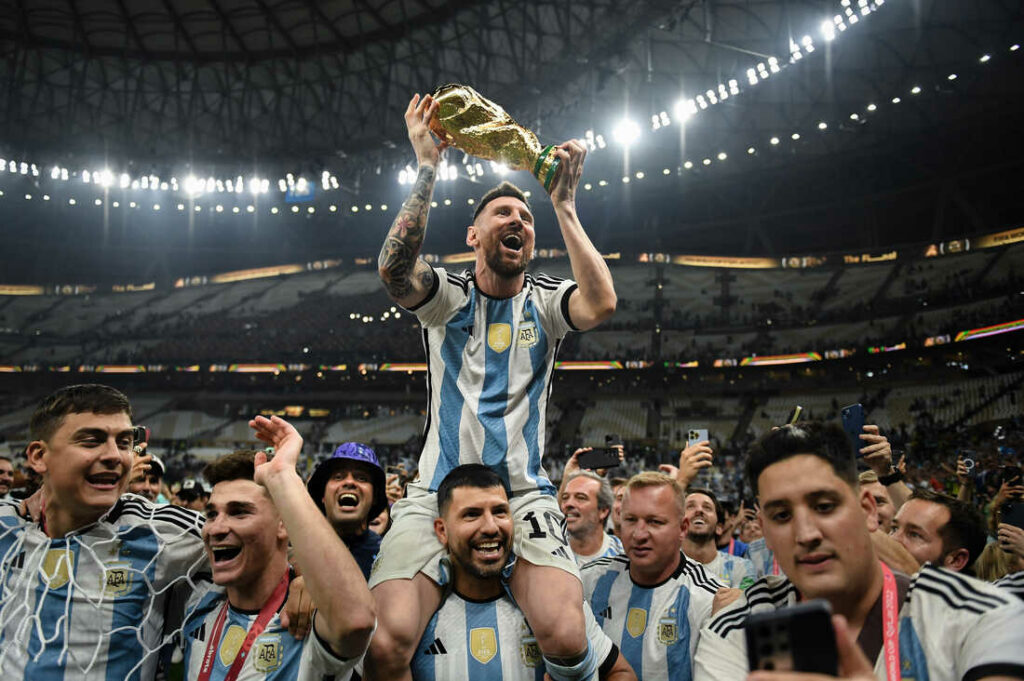
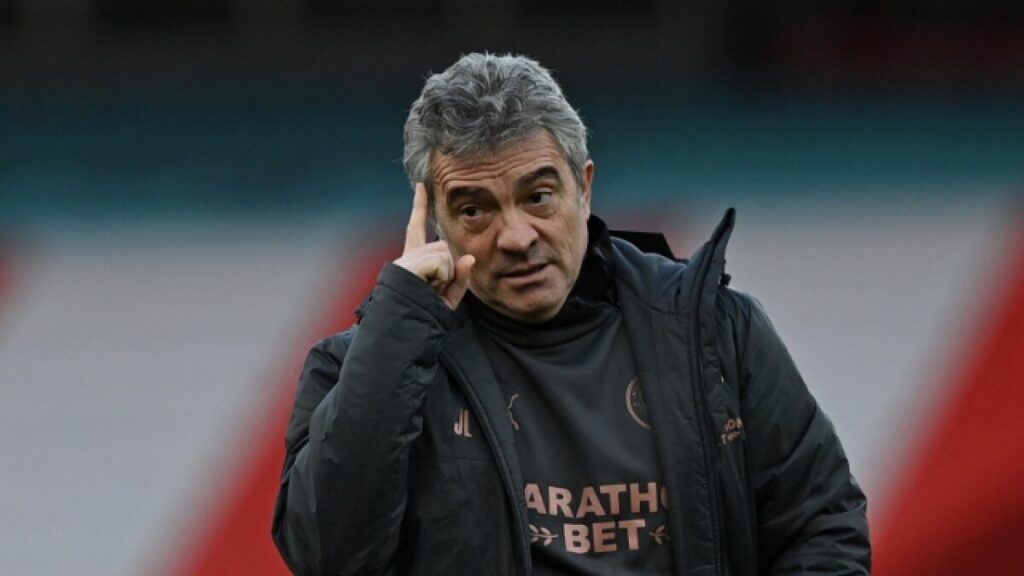
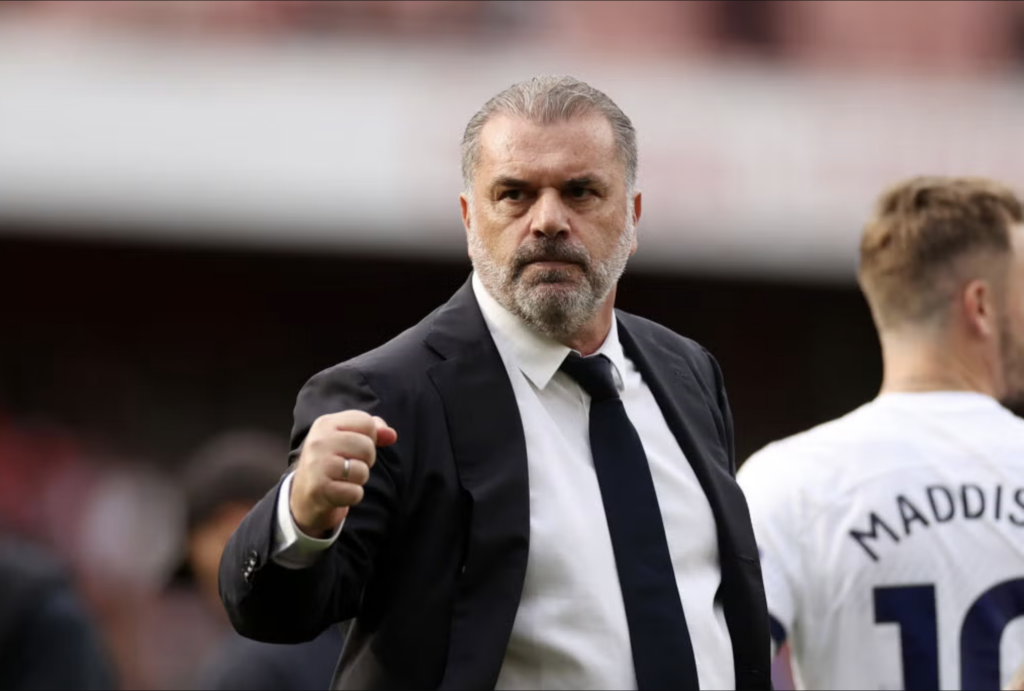
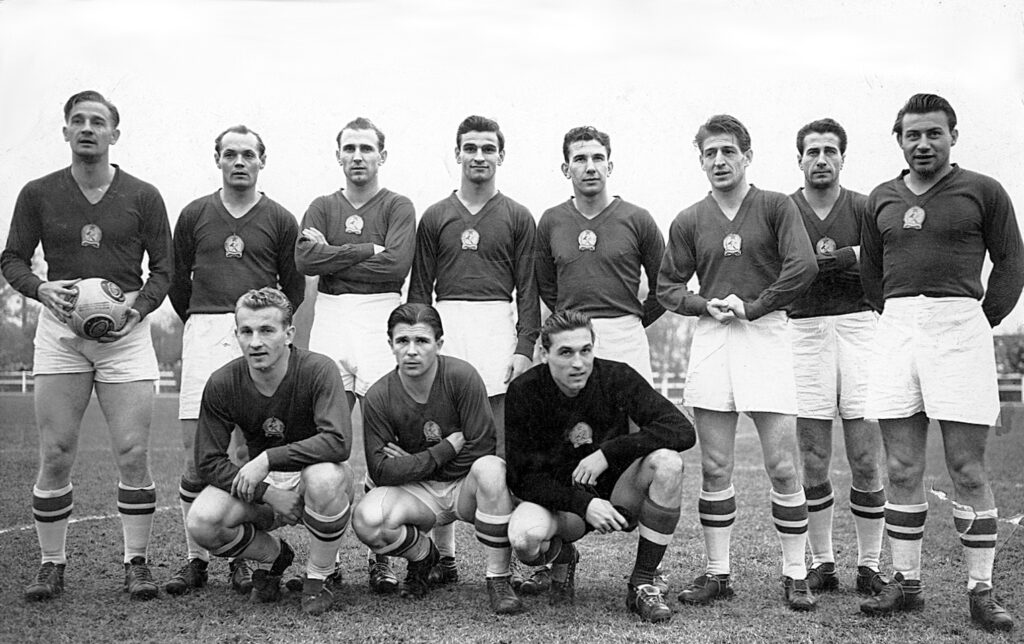
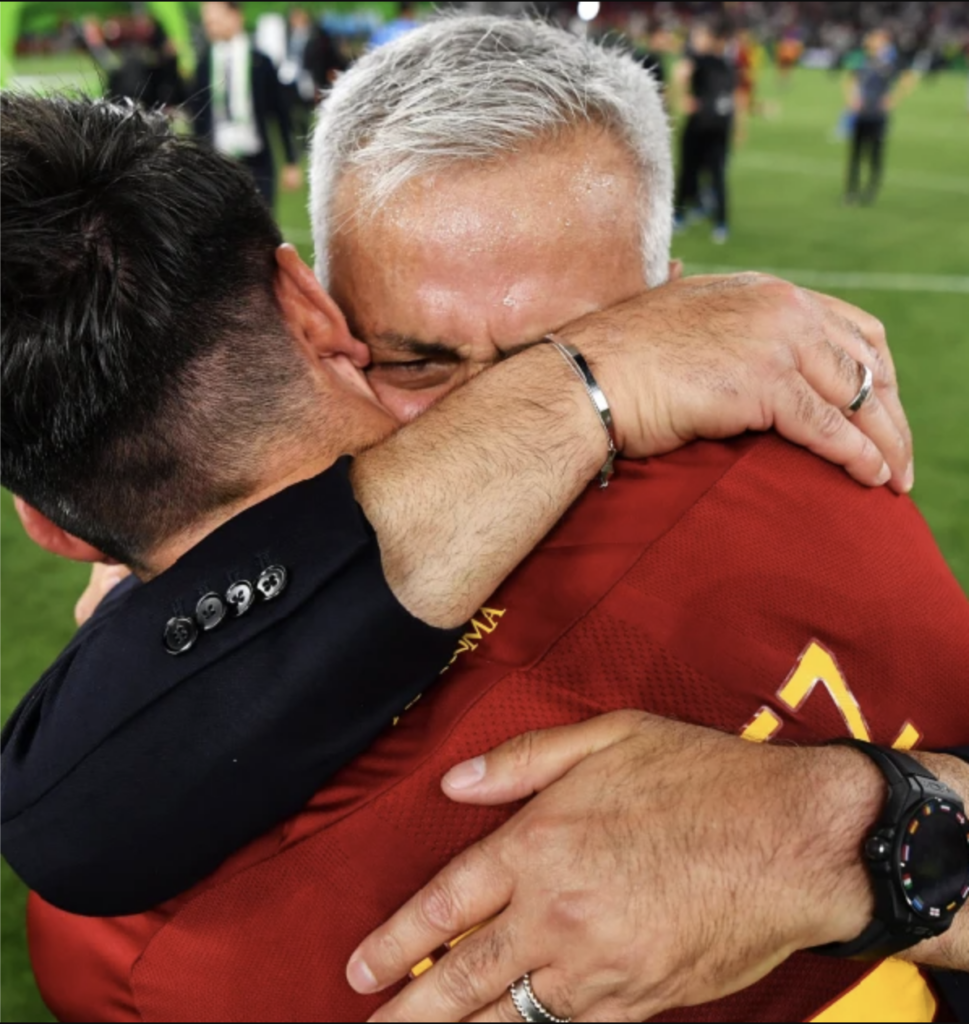
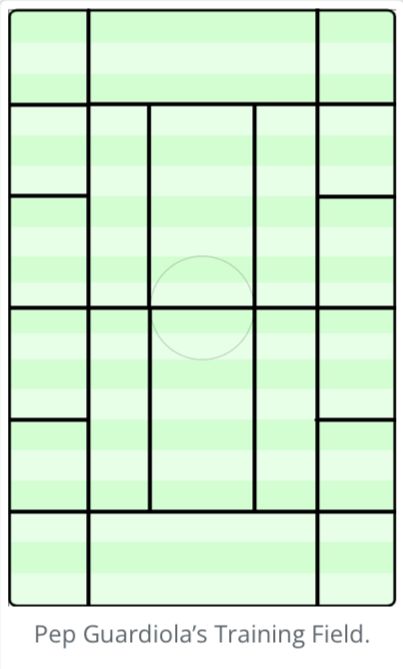
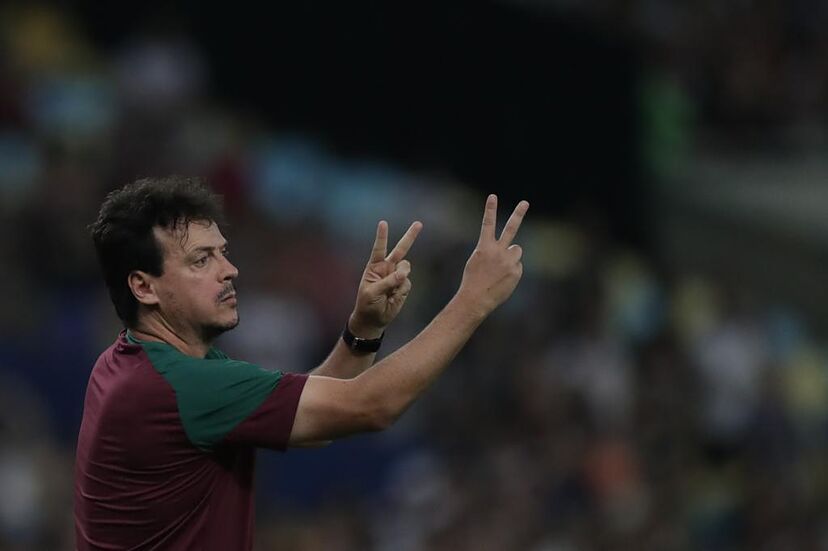
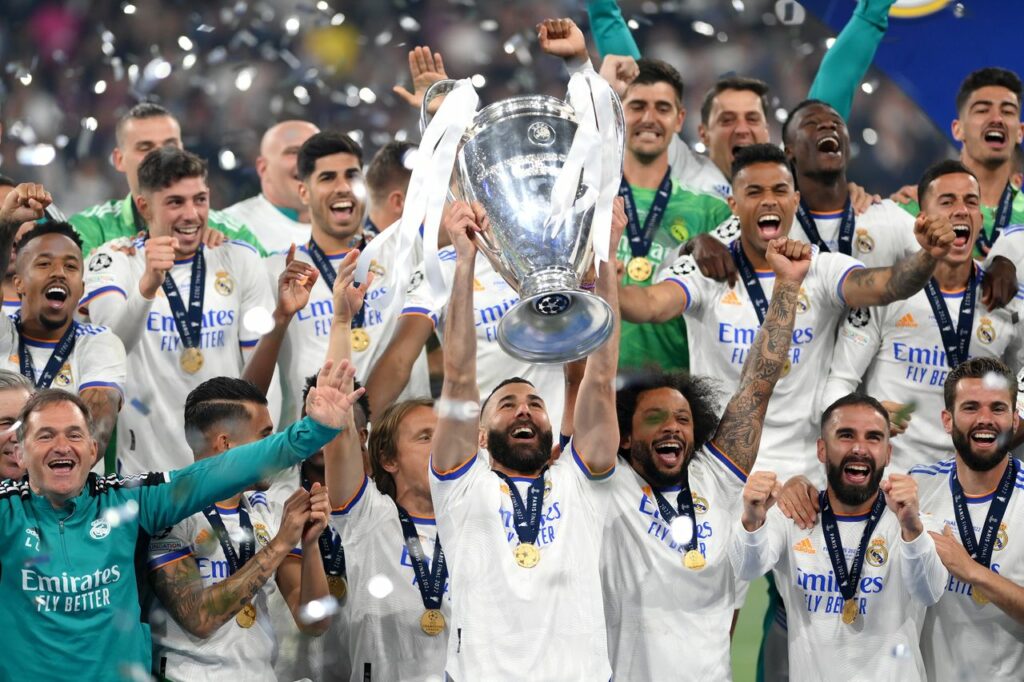
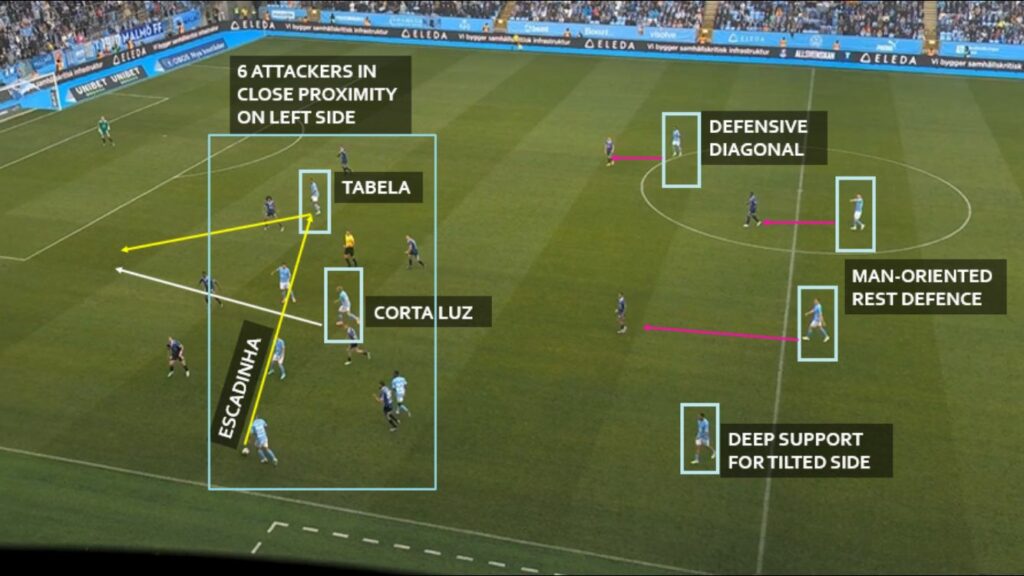
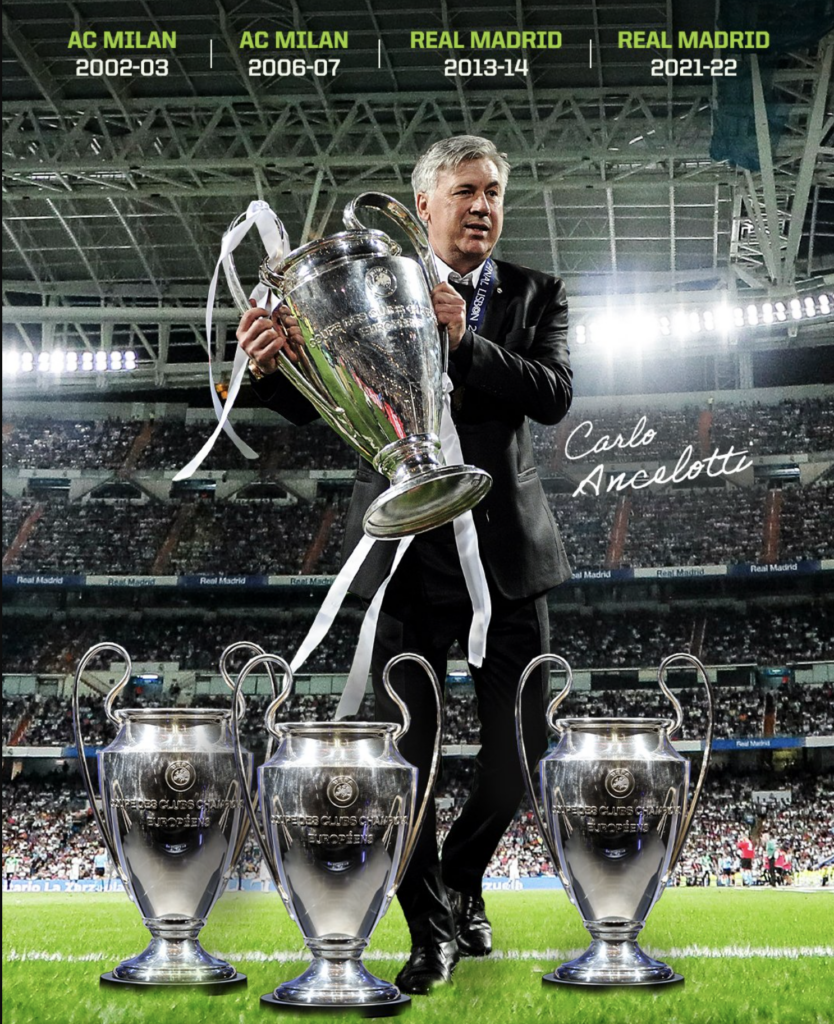
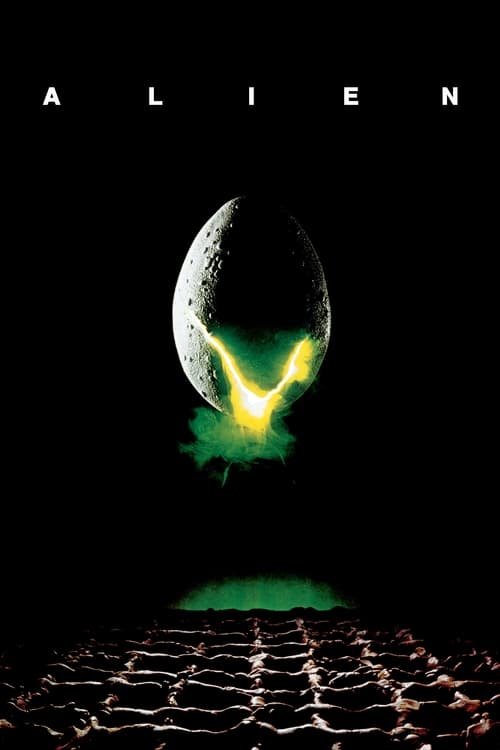
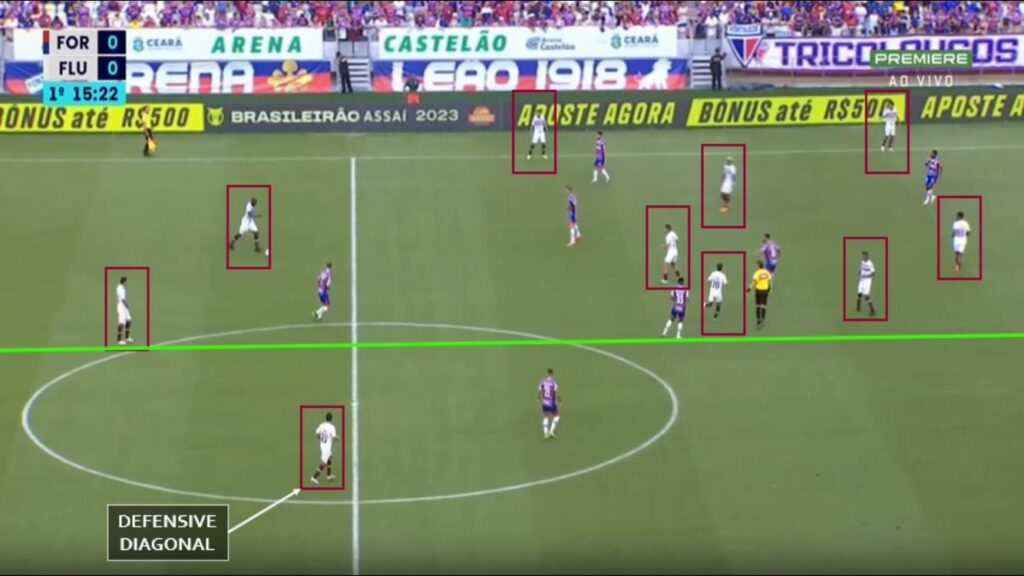
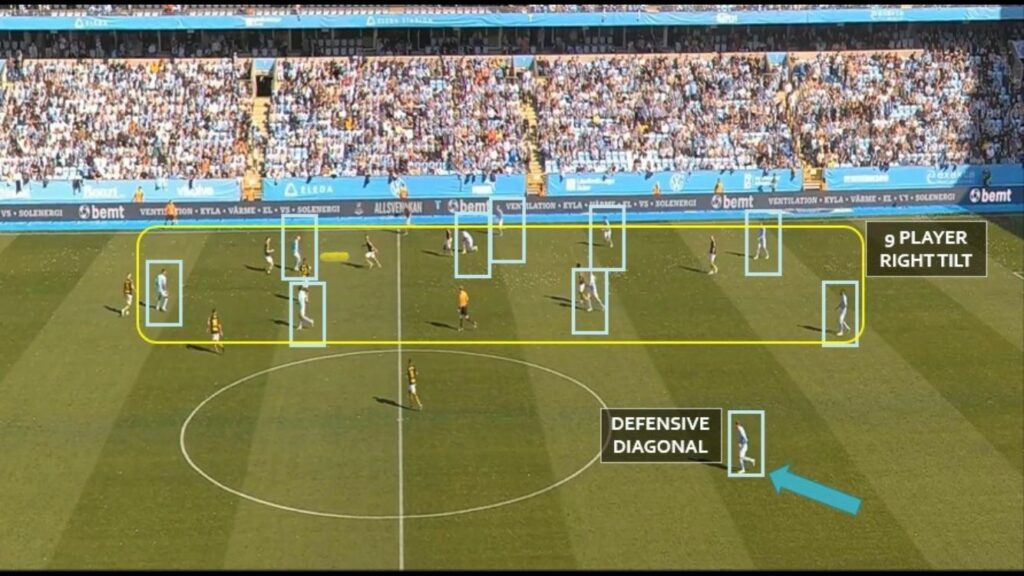
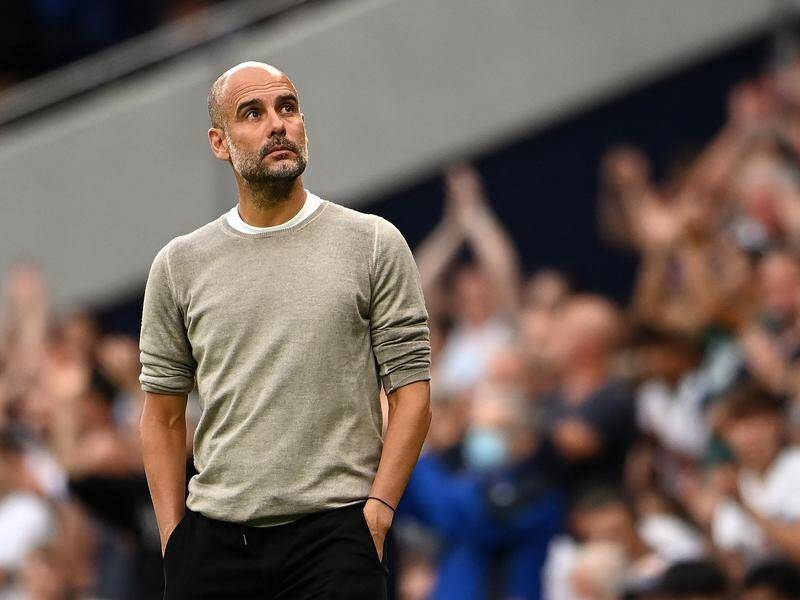
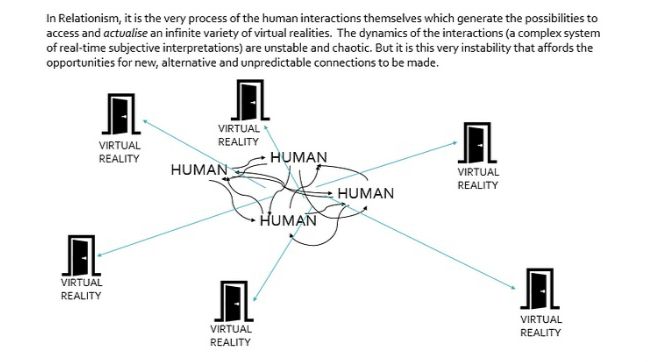
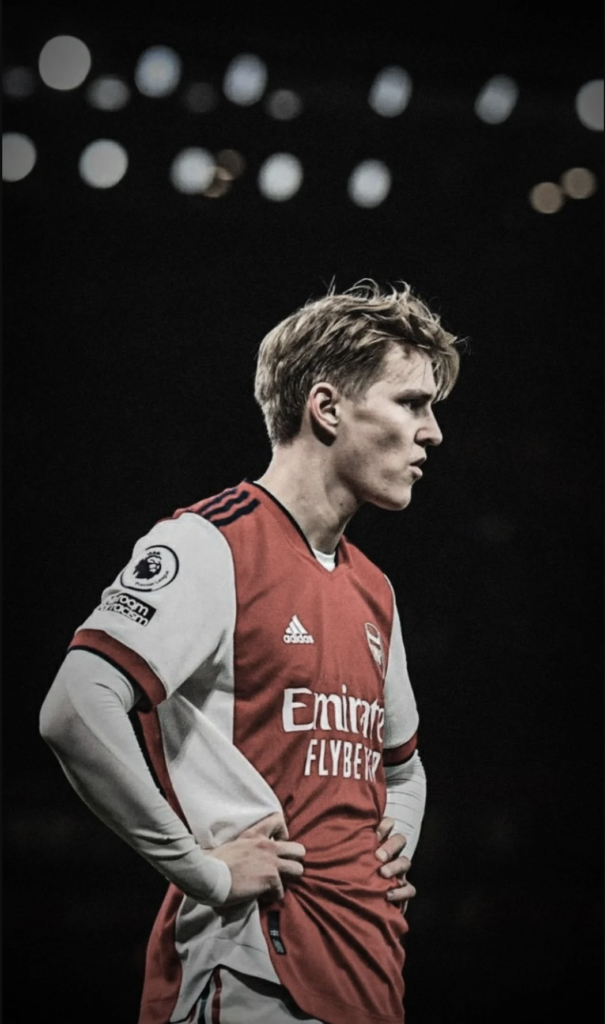
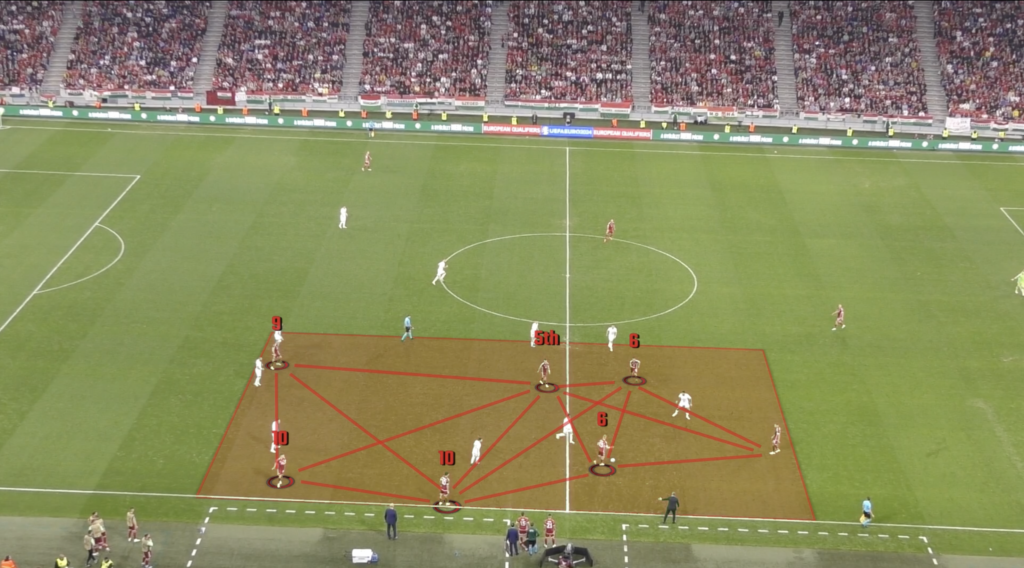
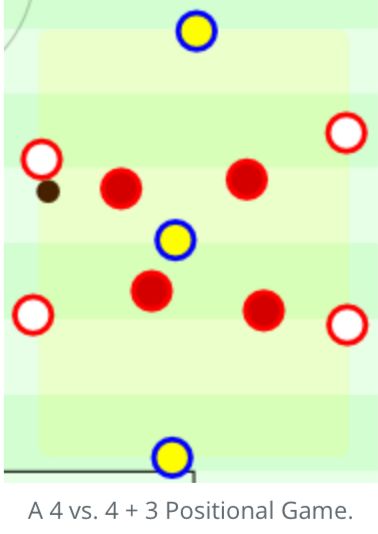
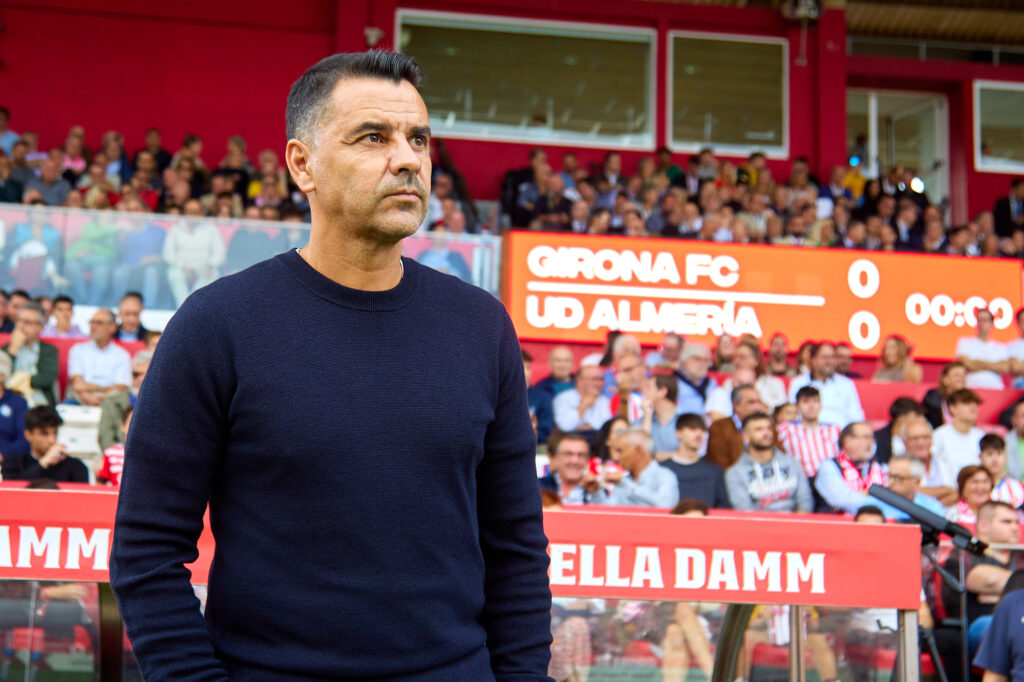
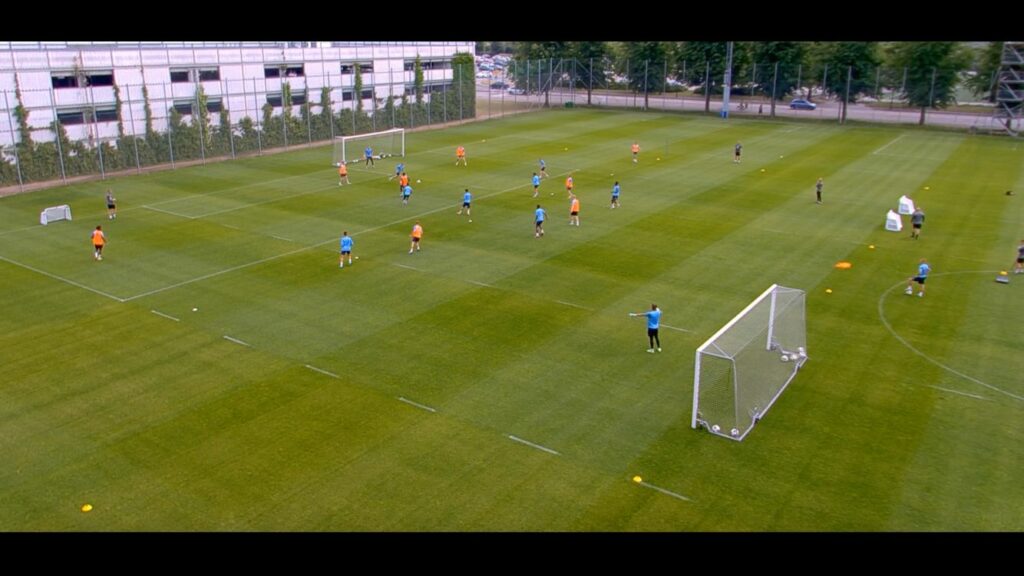
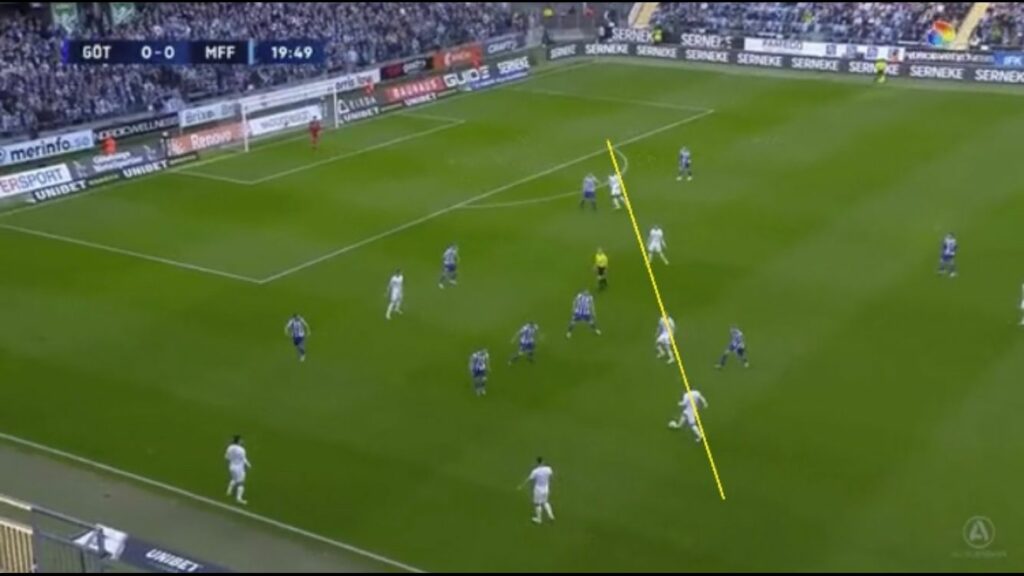
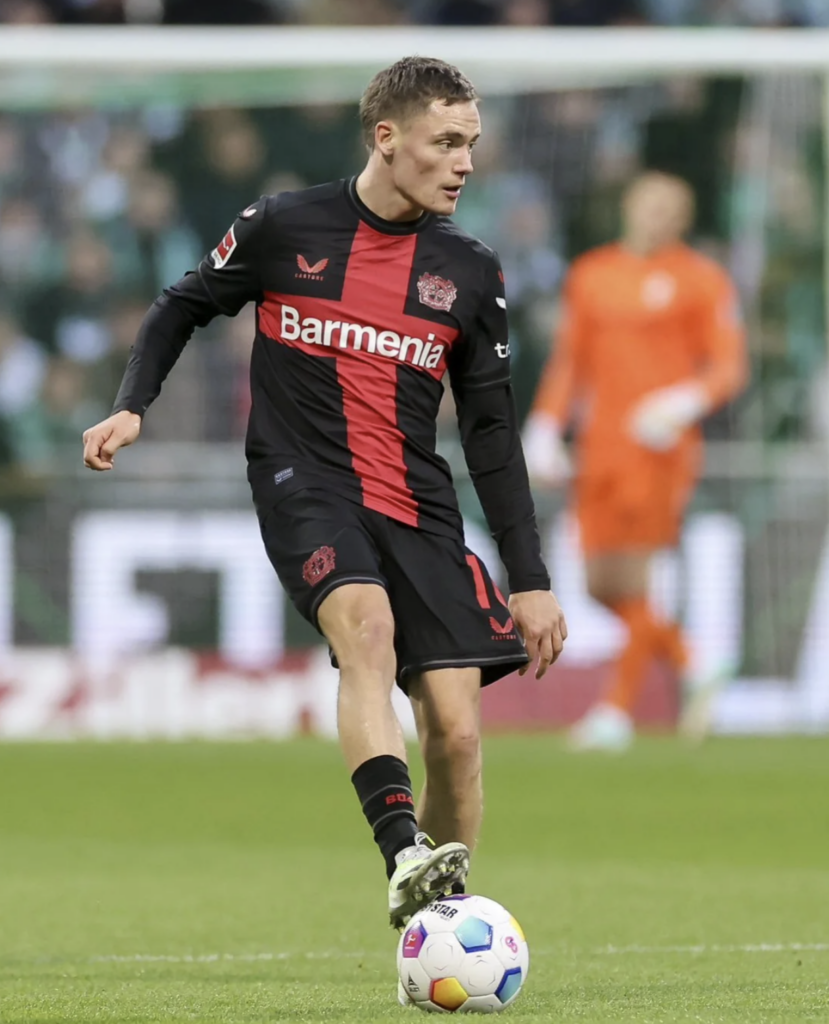
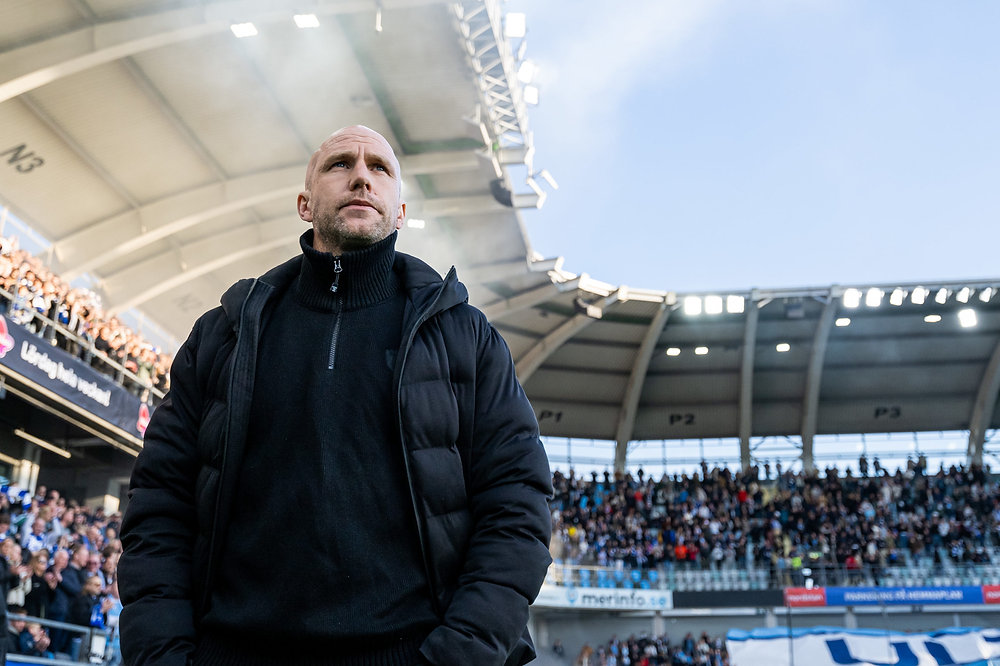
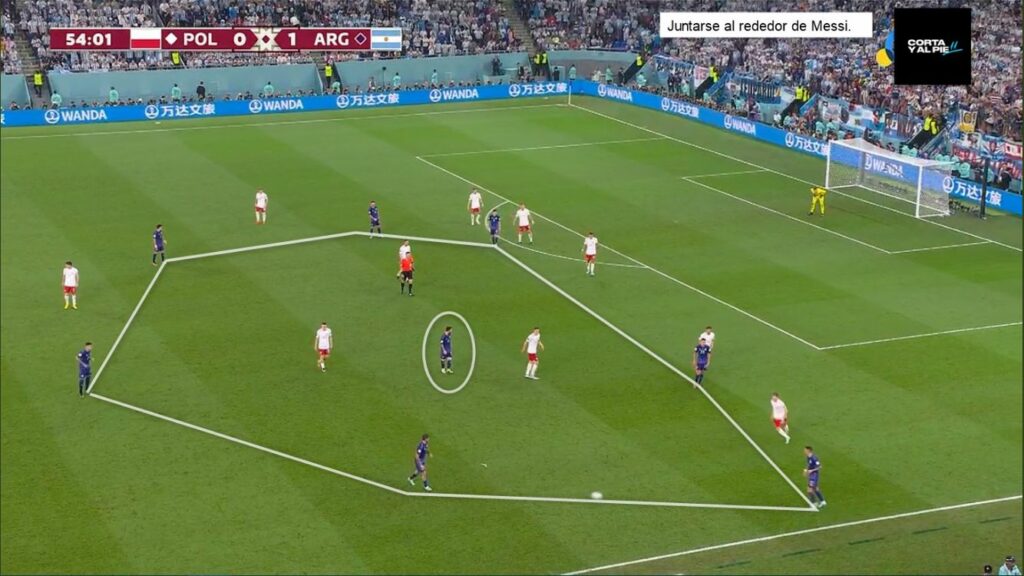
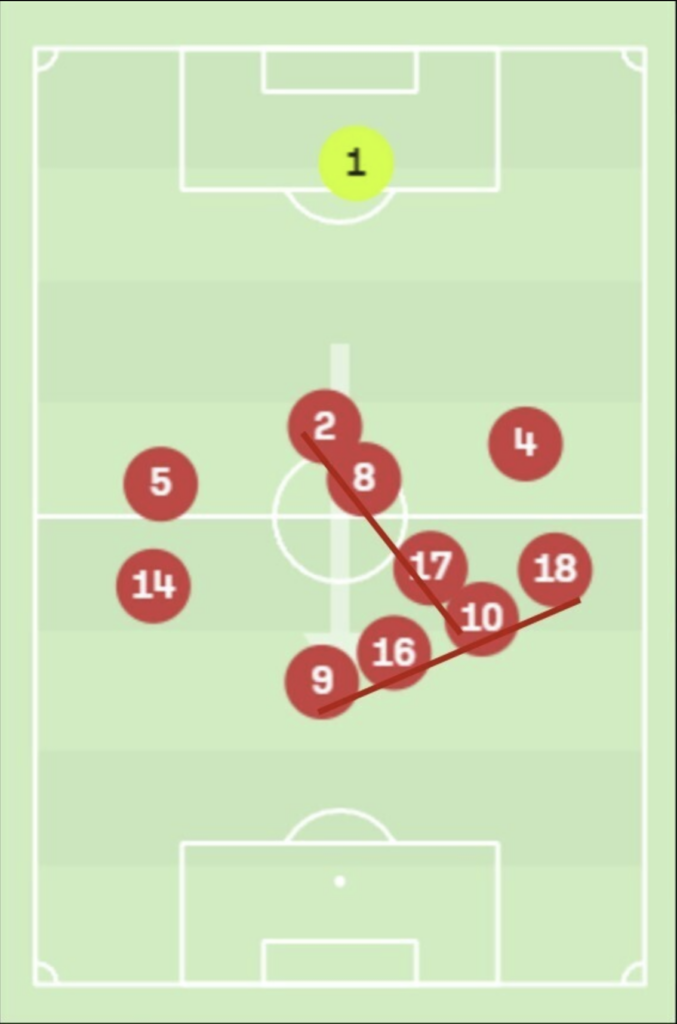
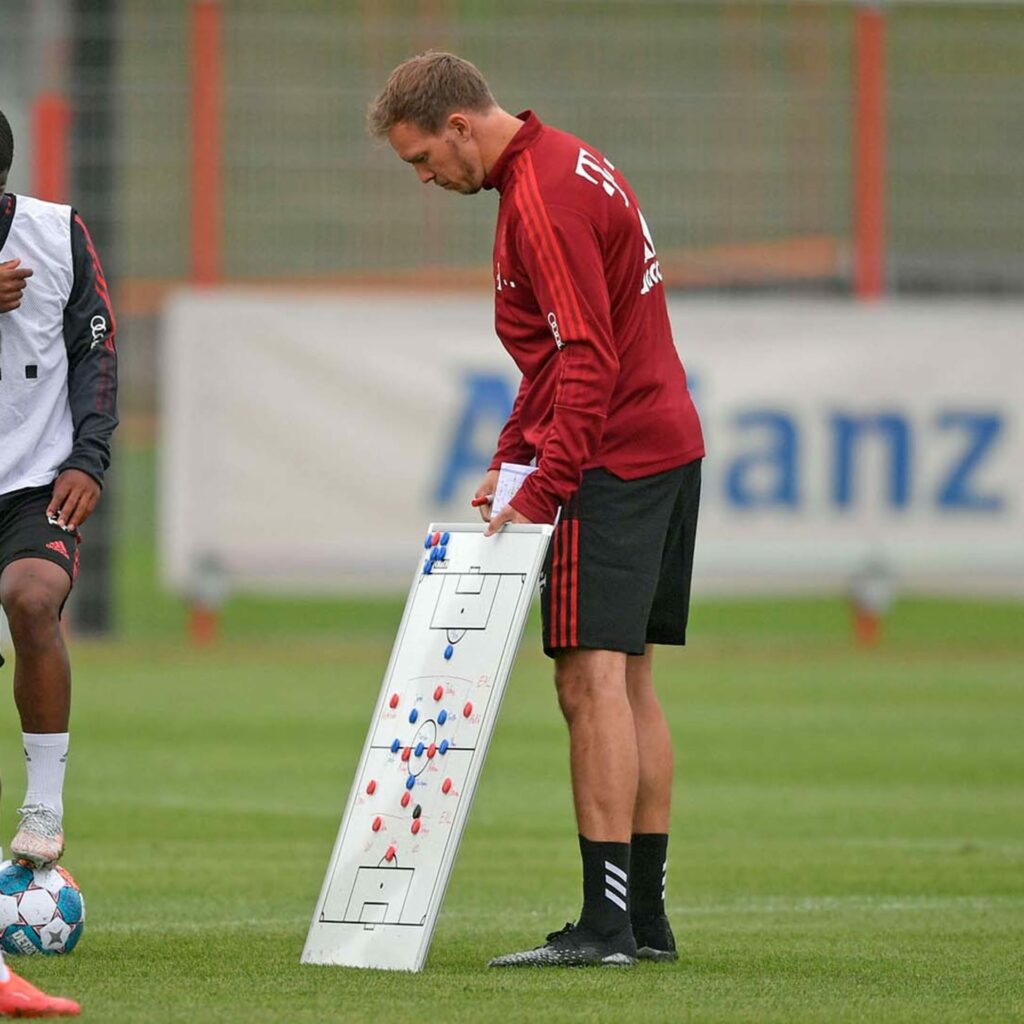
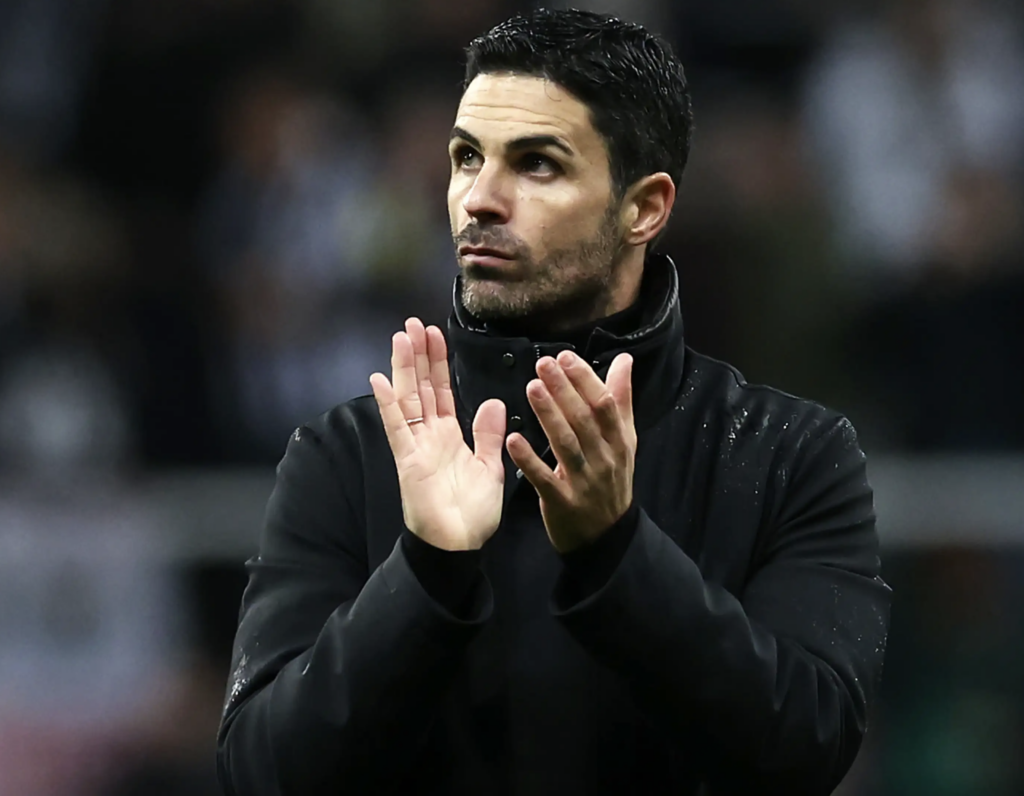
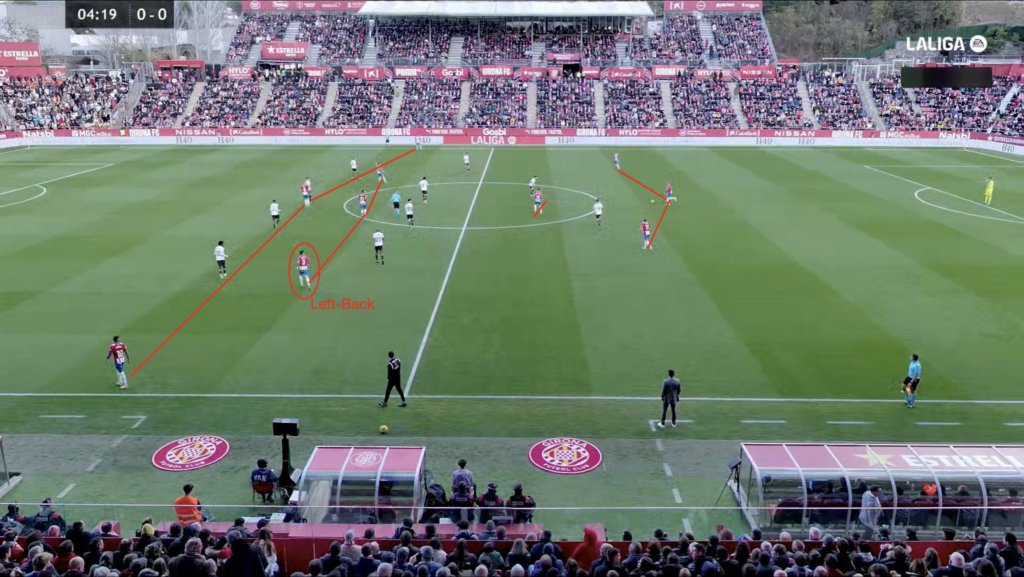

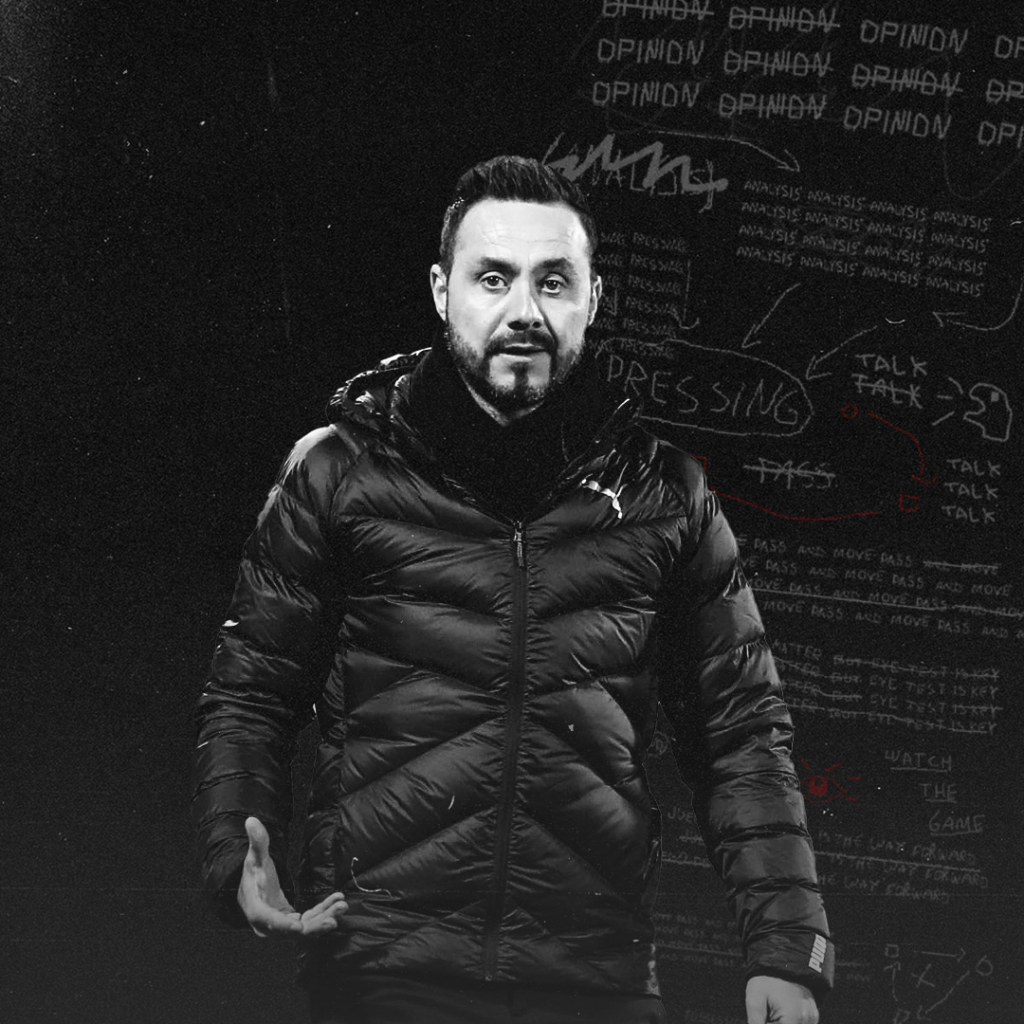
1 Kommentar Alle anzeigen
Nate January 12, 2024 um 7:47 pm
Thank you for this interview and article which many of us have been waiting for. I appreciate the narrator’s sense of humor, Istvan’s practical insight, and Jamie bringing in ecological dynamics as a theoretical framework that pairs appropriately with a functional approach. And, to Martin’s bonus commentary, he hints at what Thomas Sowell reminds us – “There are no solutions; there are only tradeoffs.”